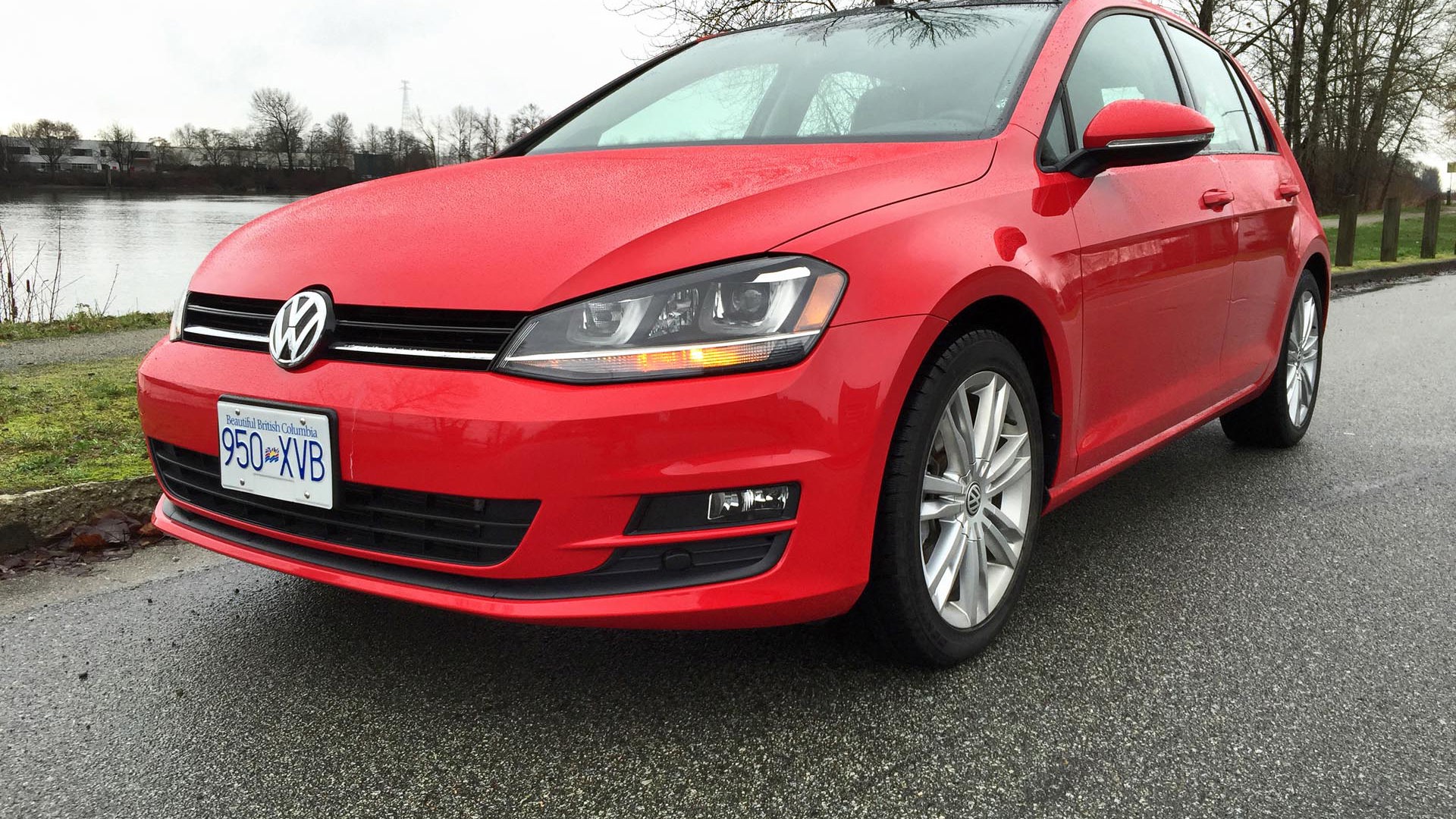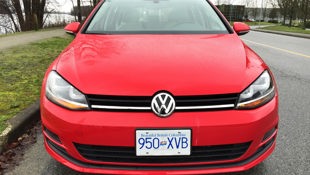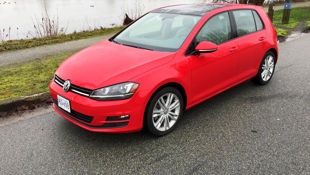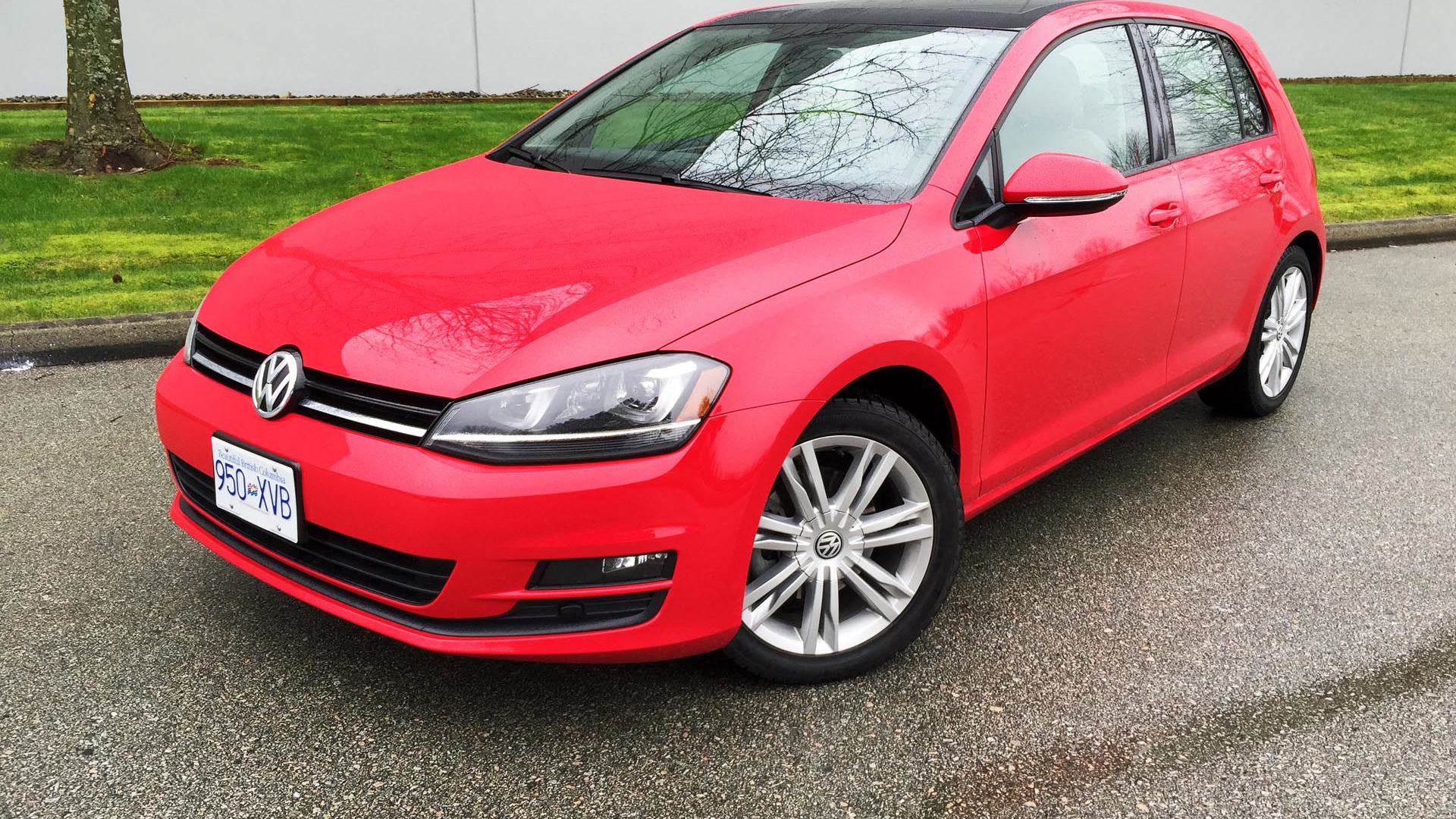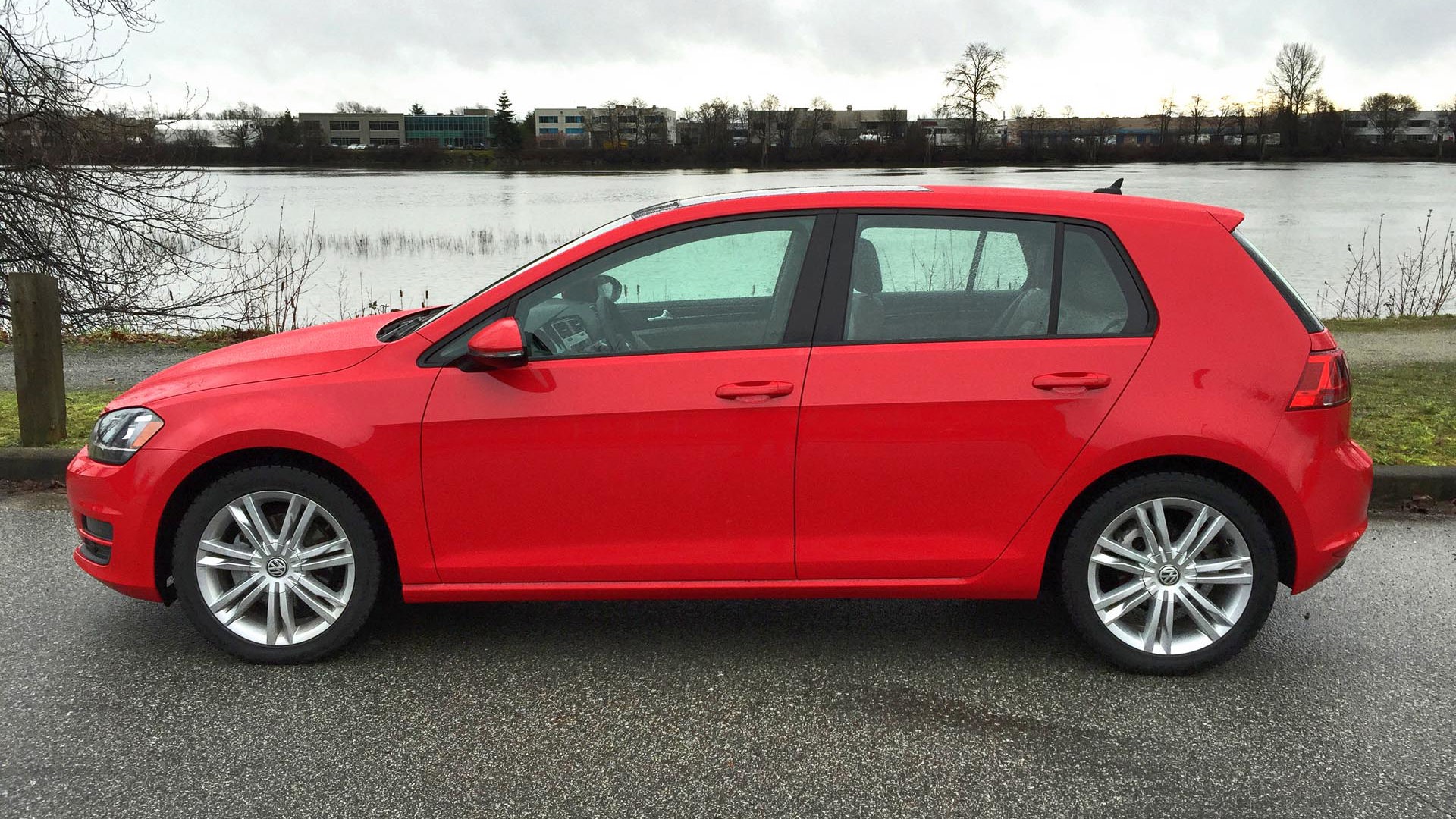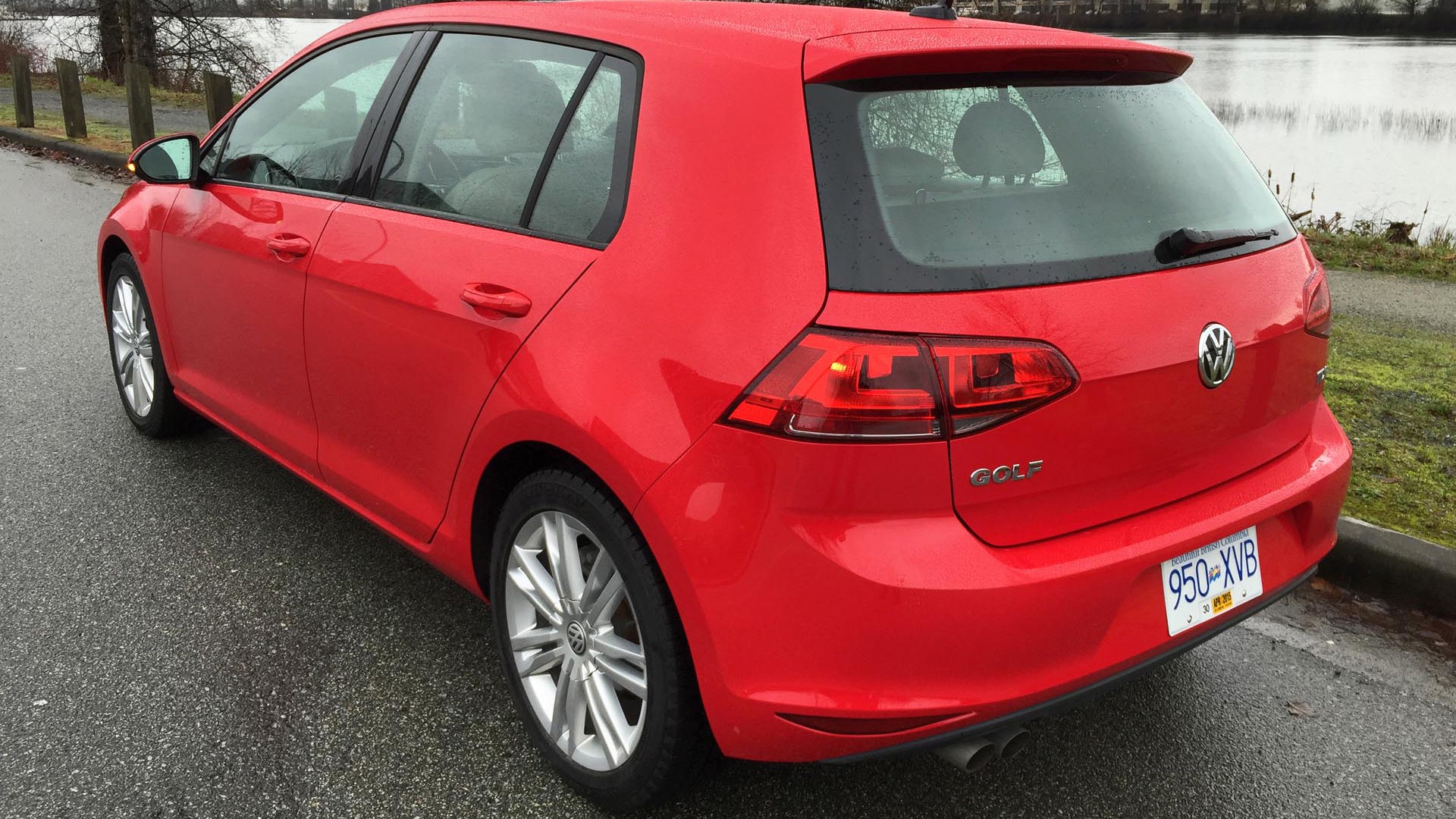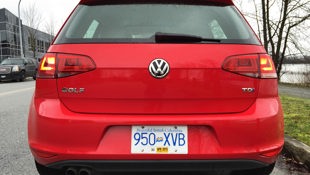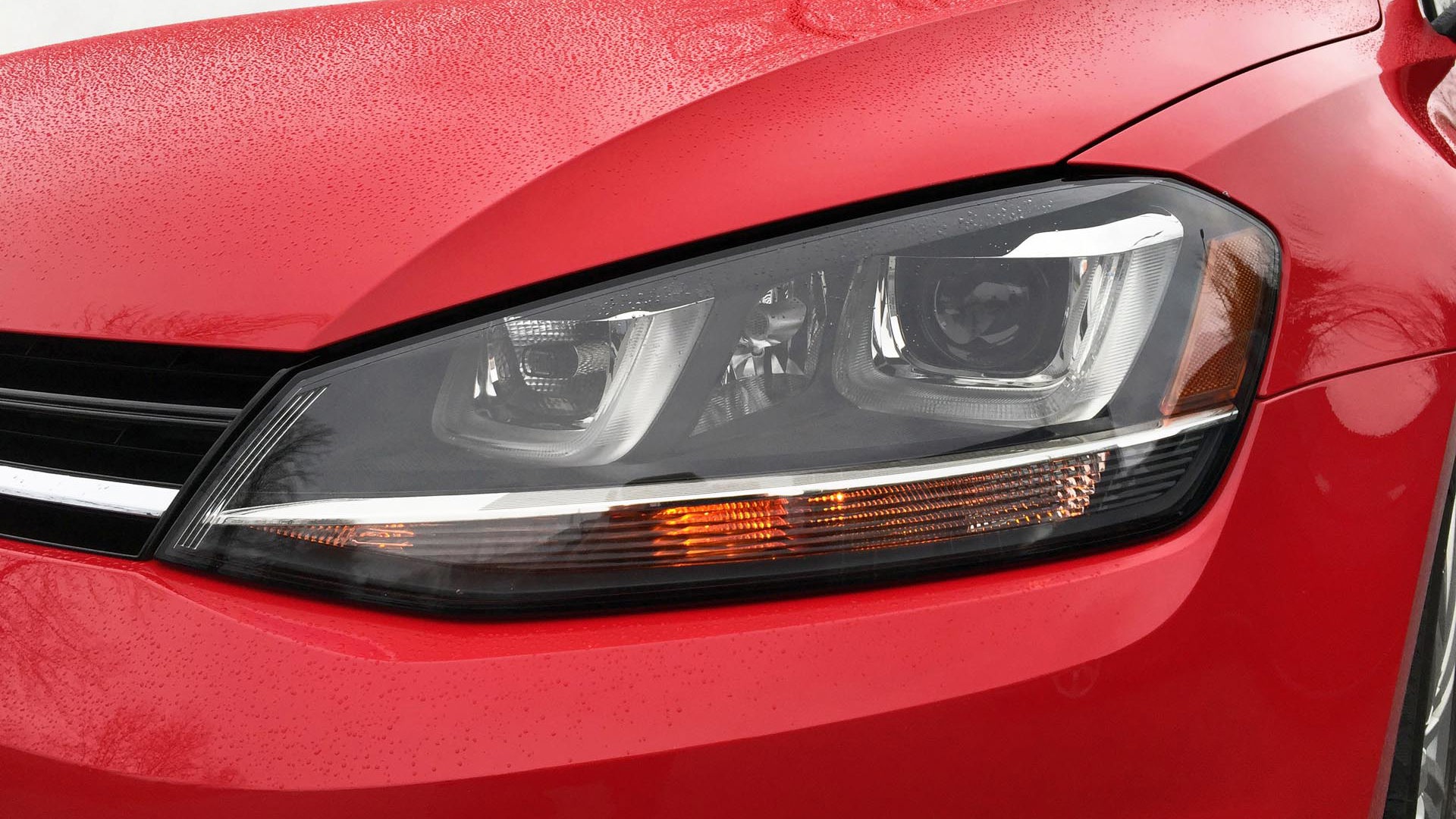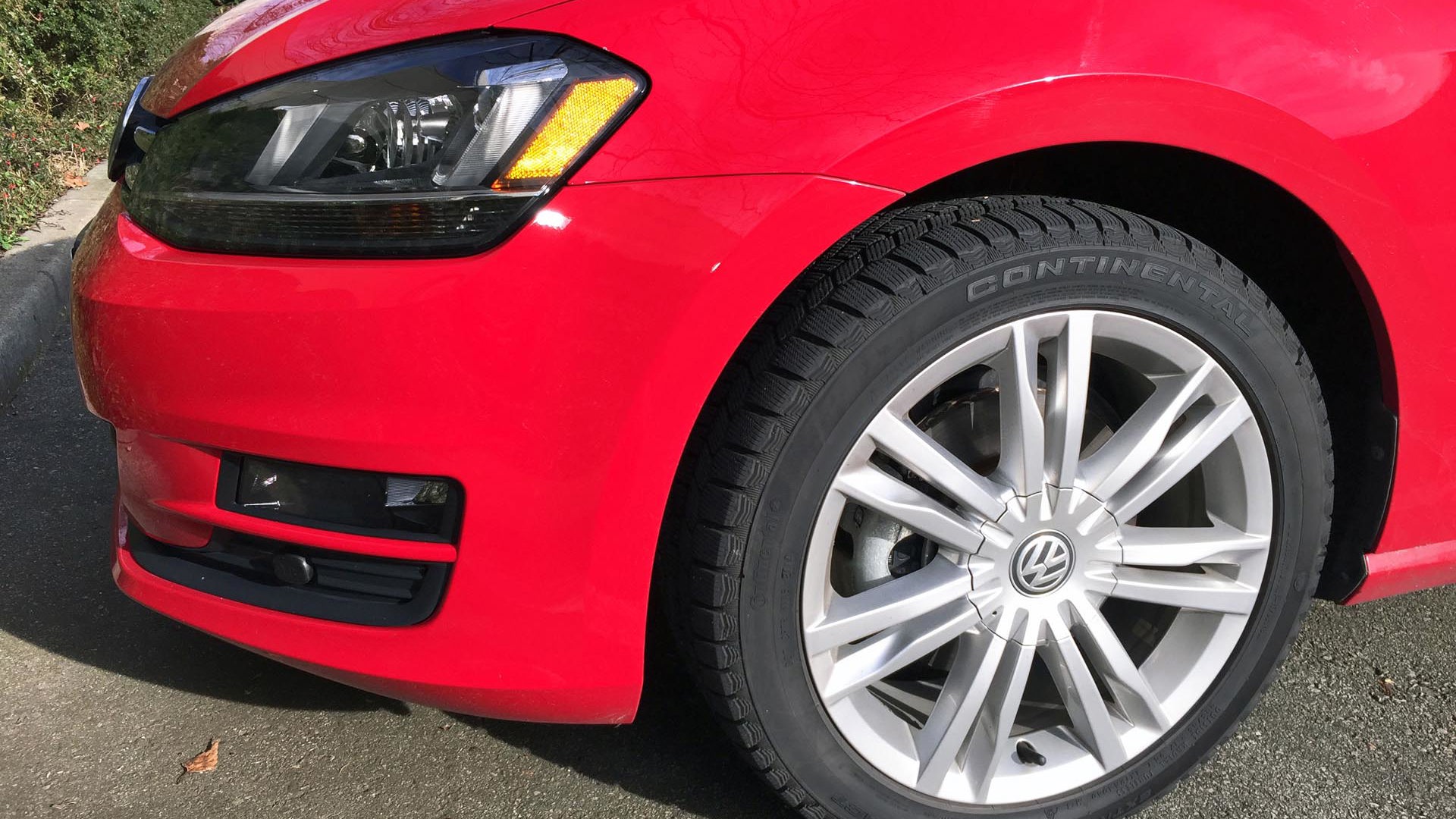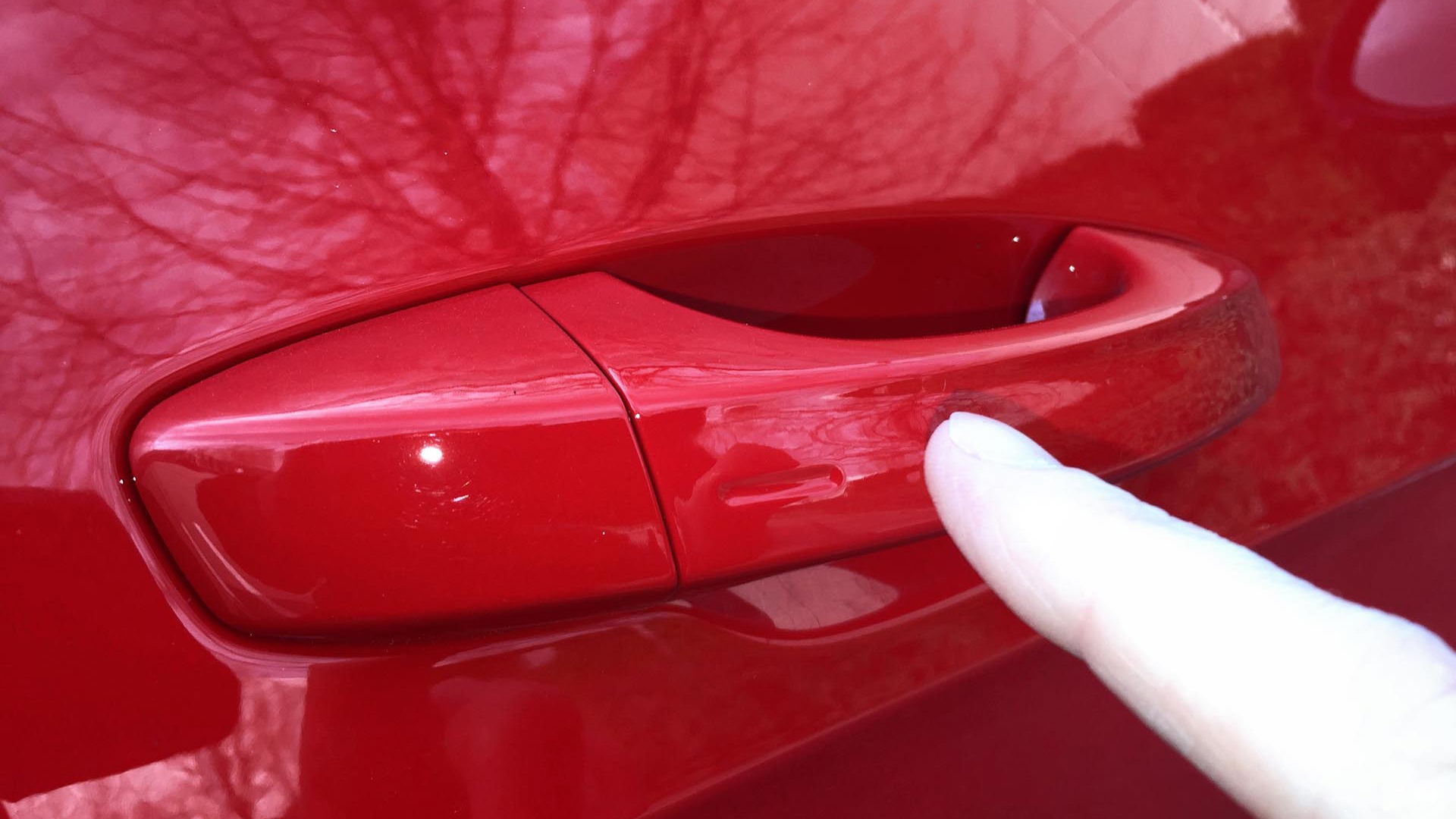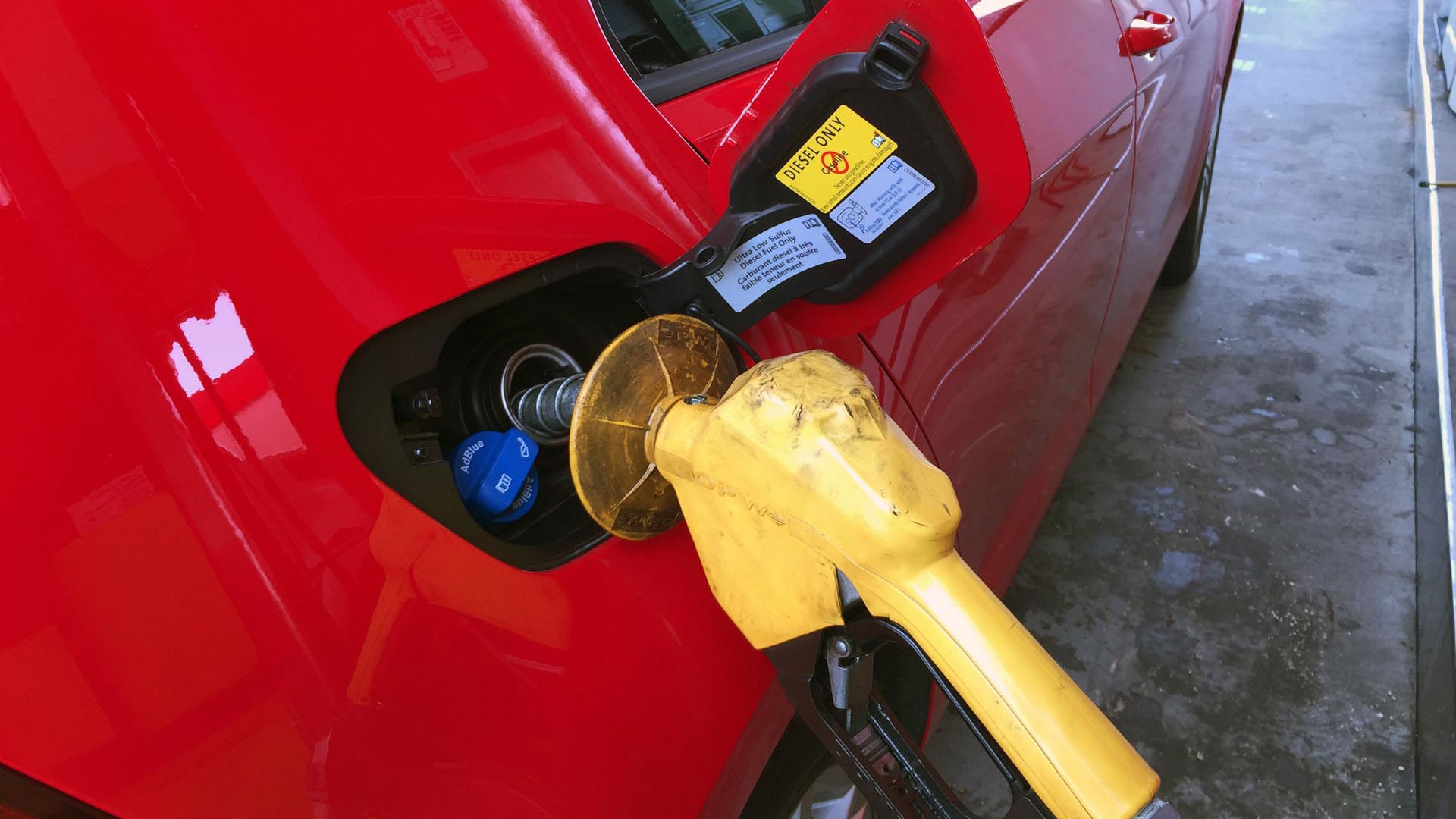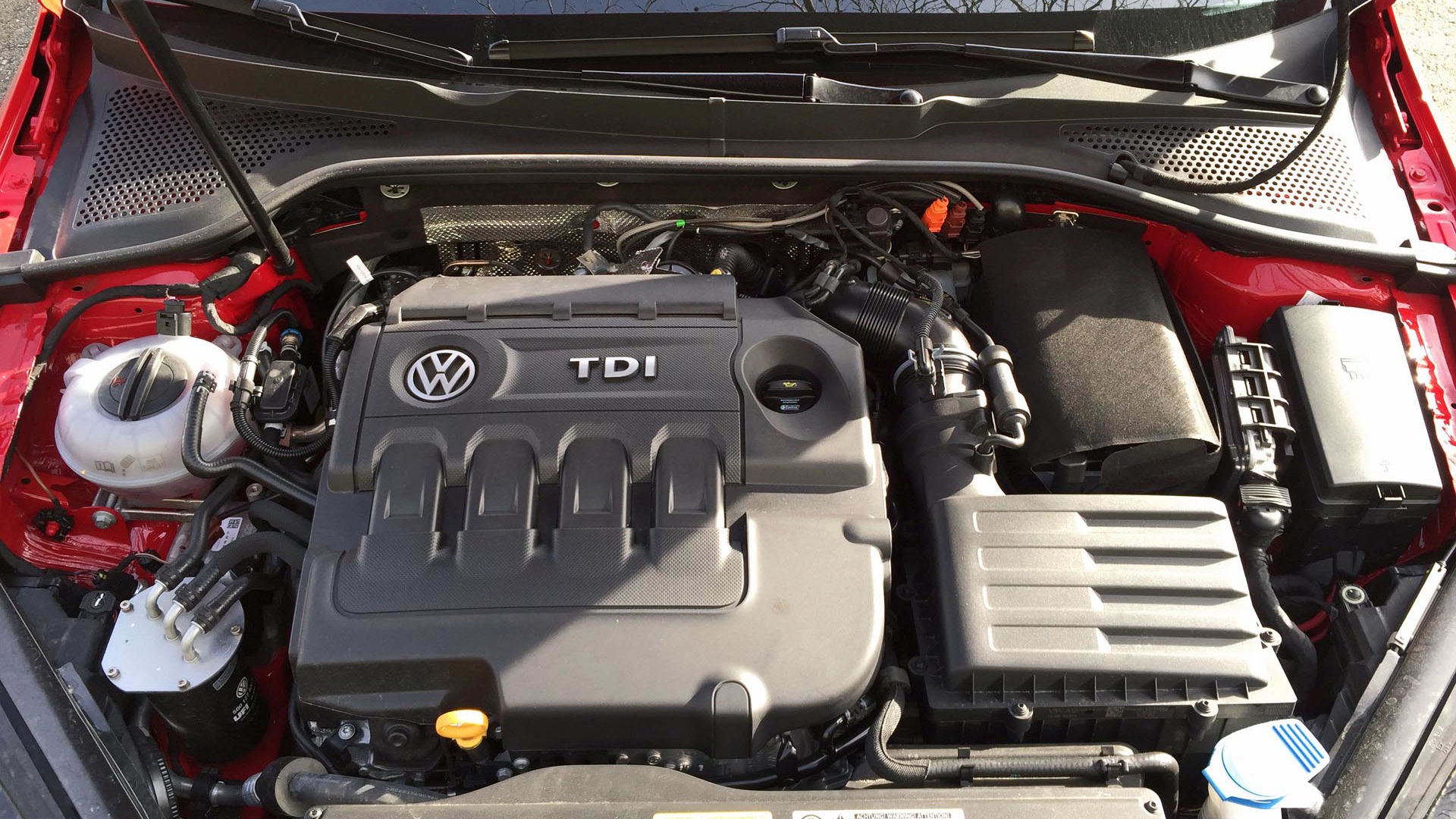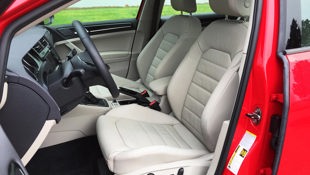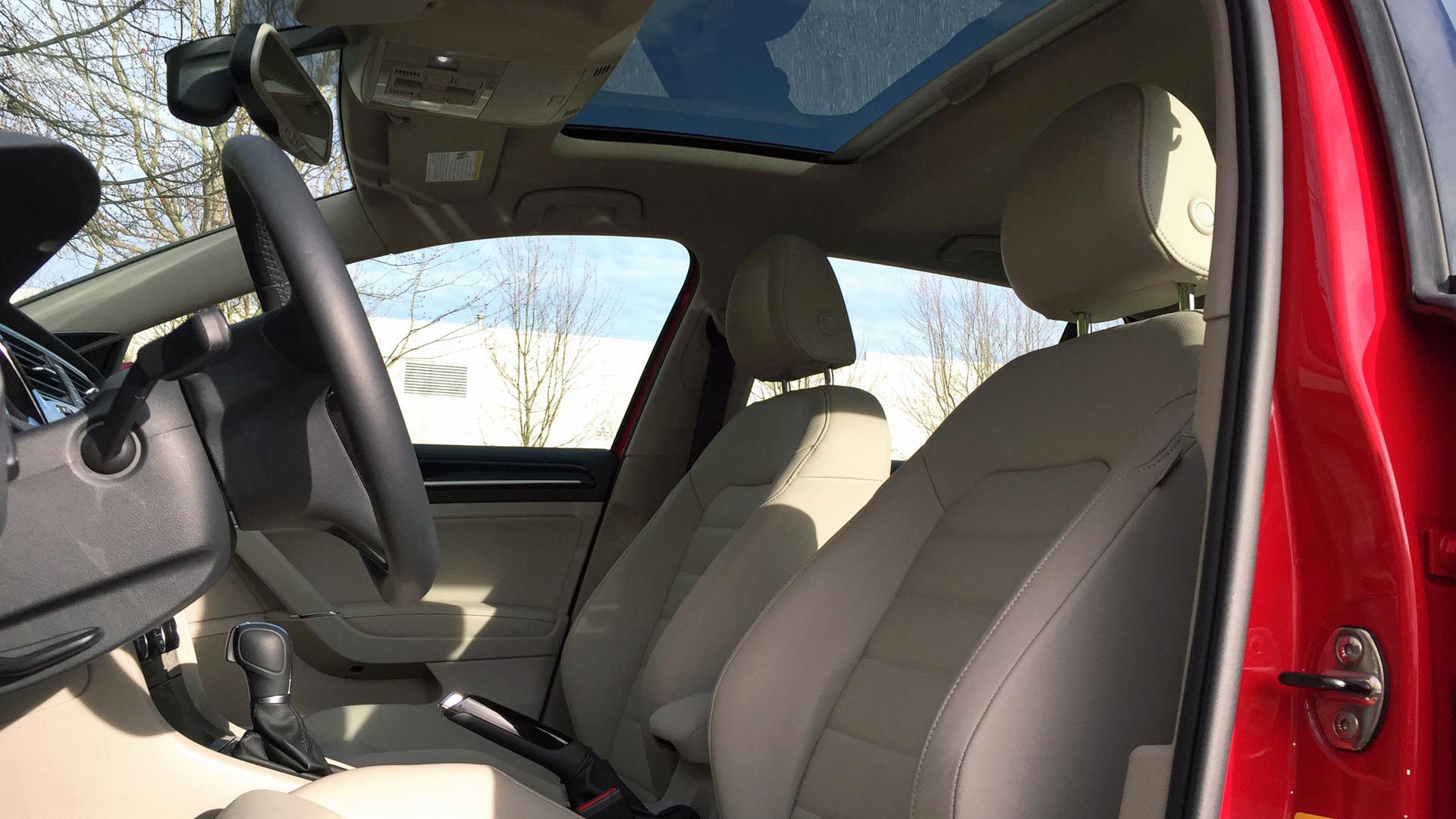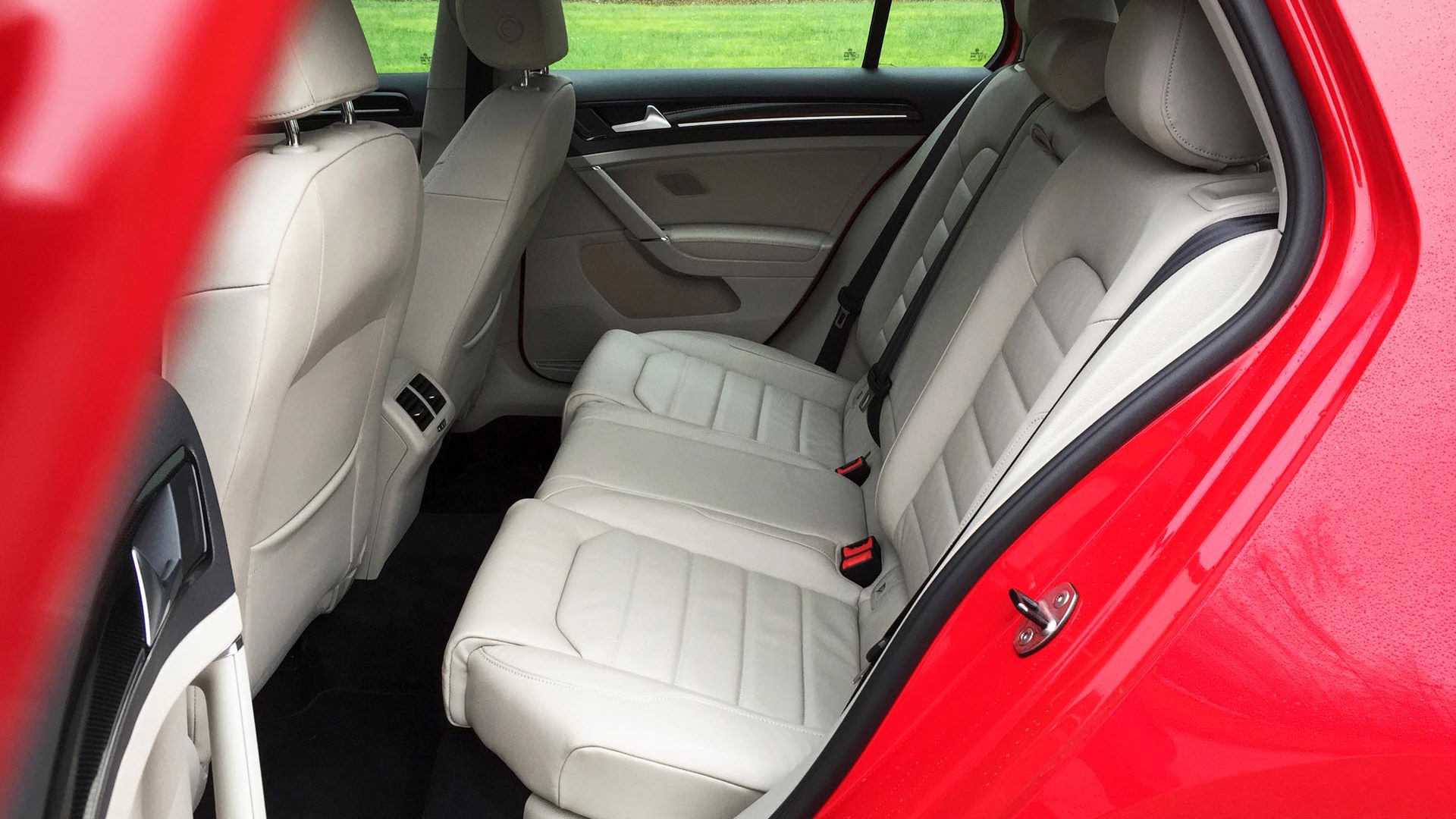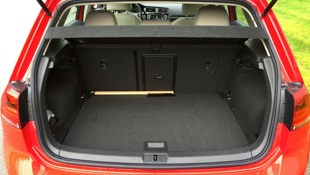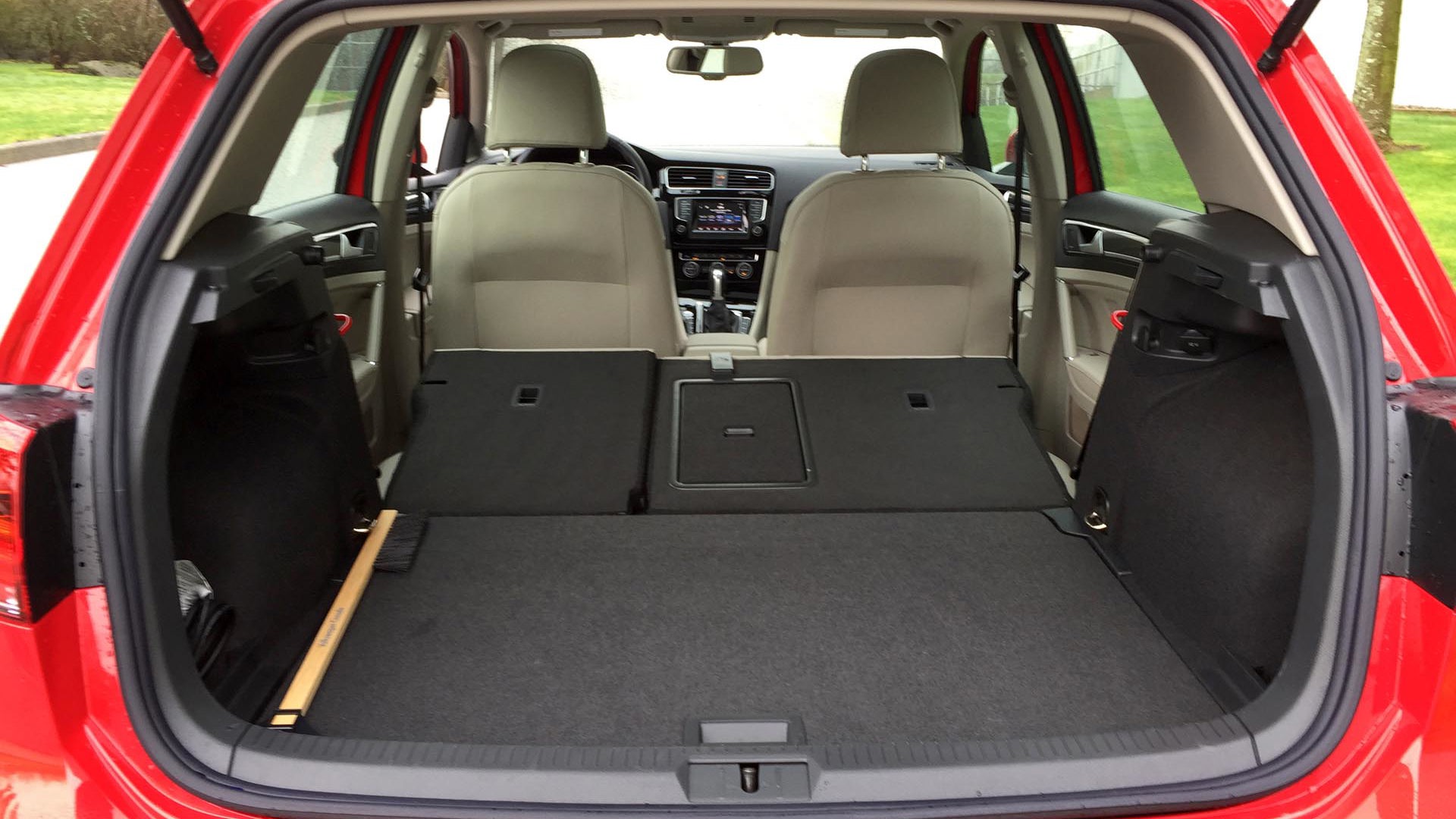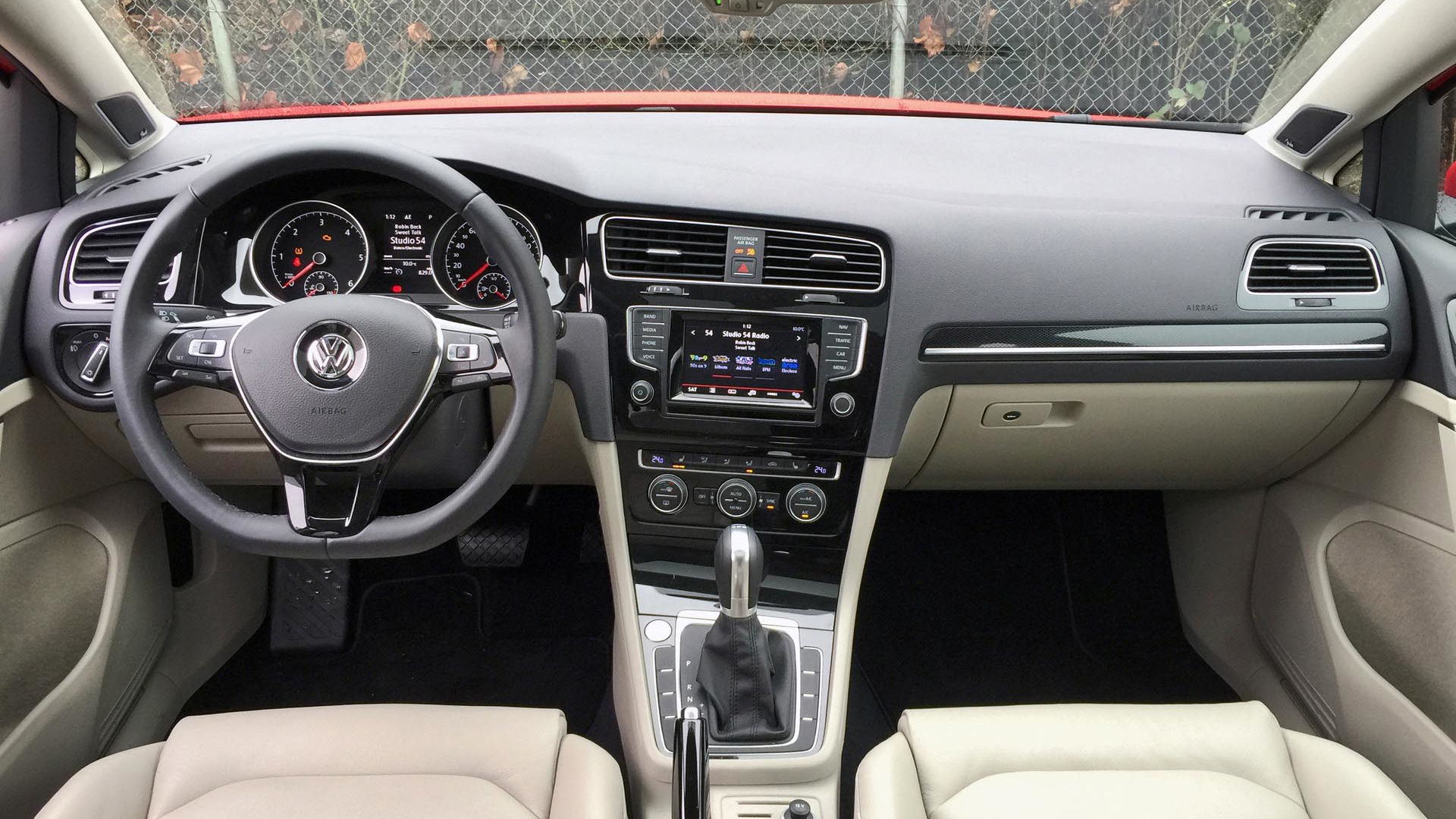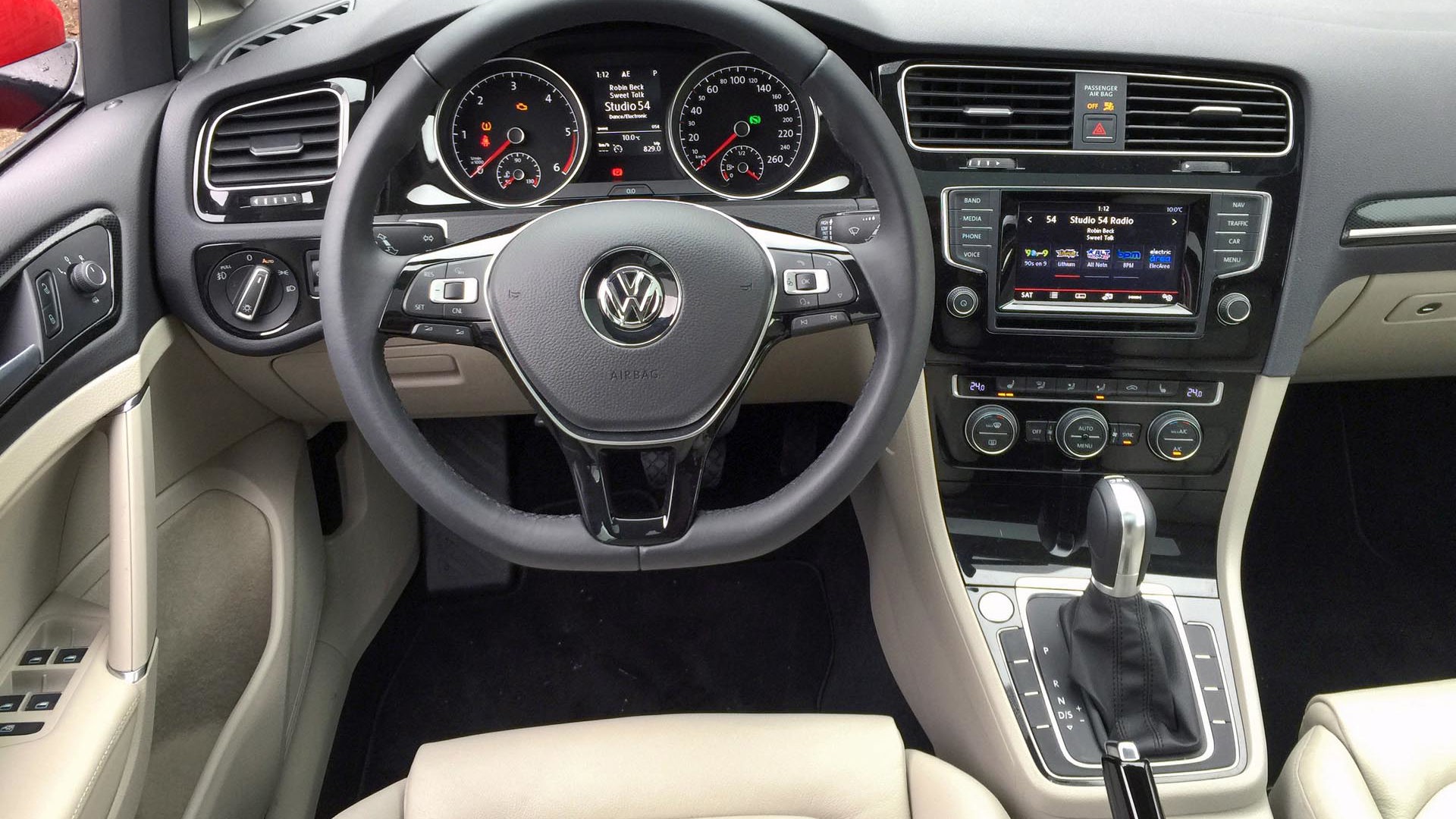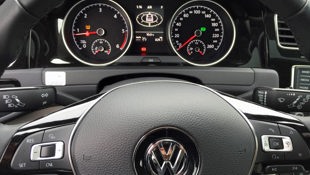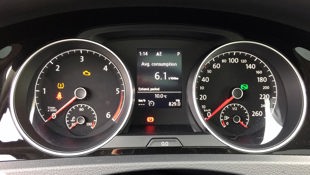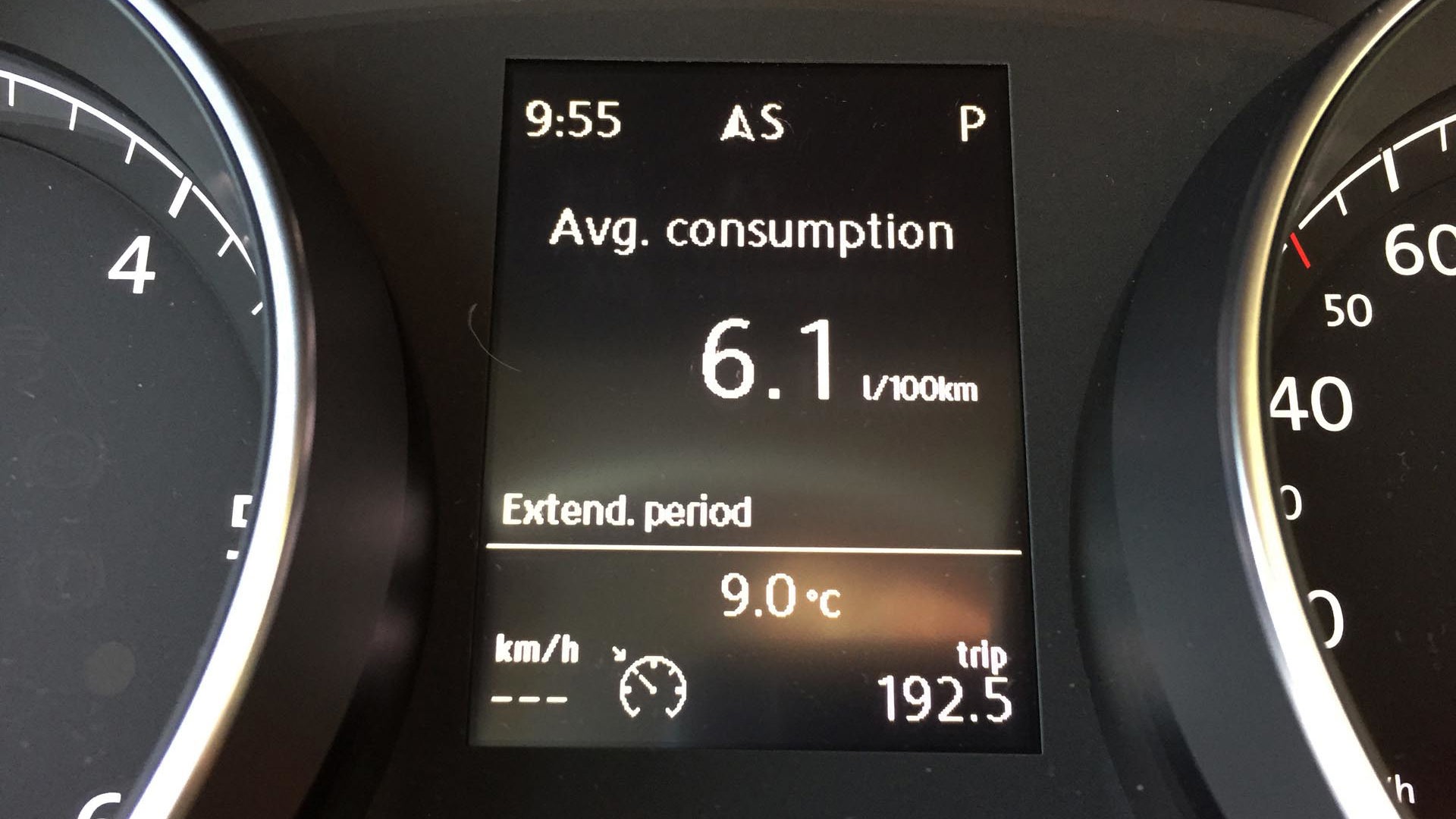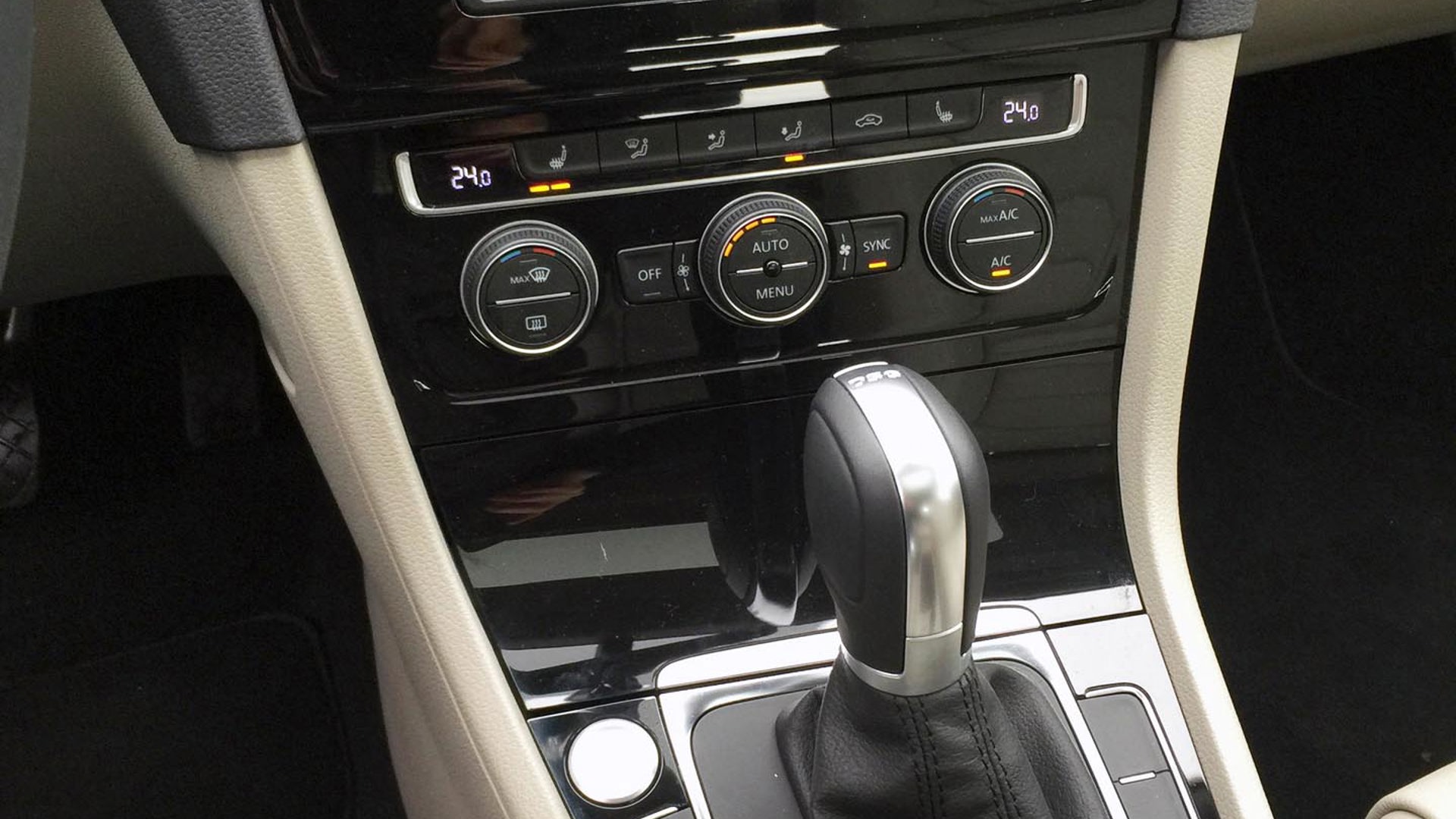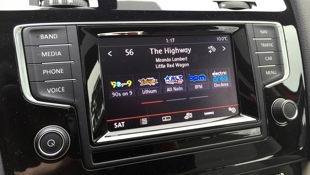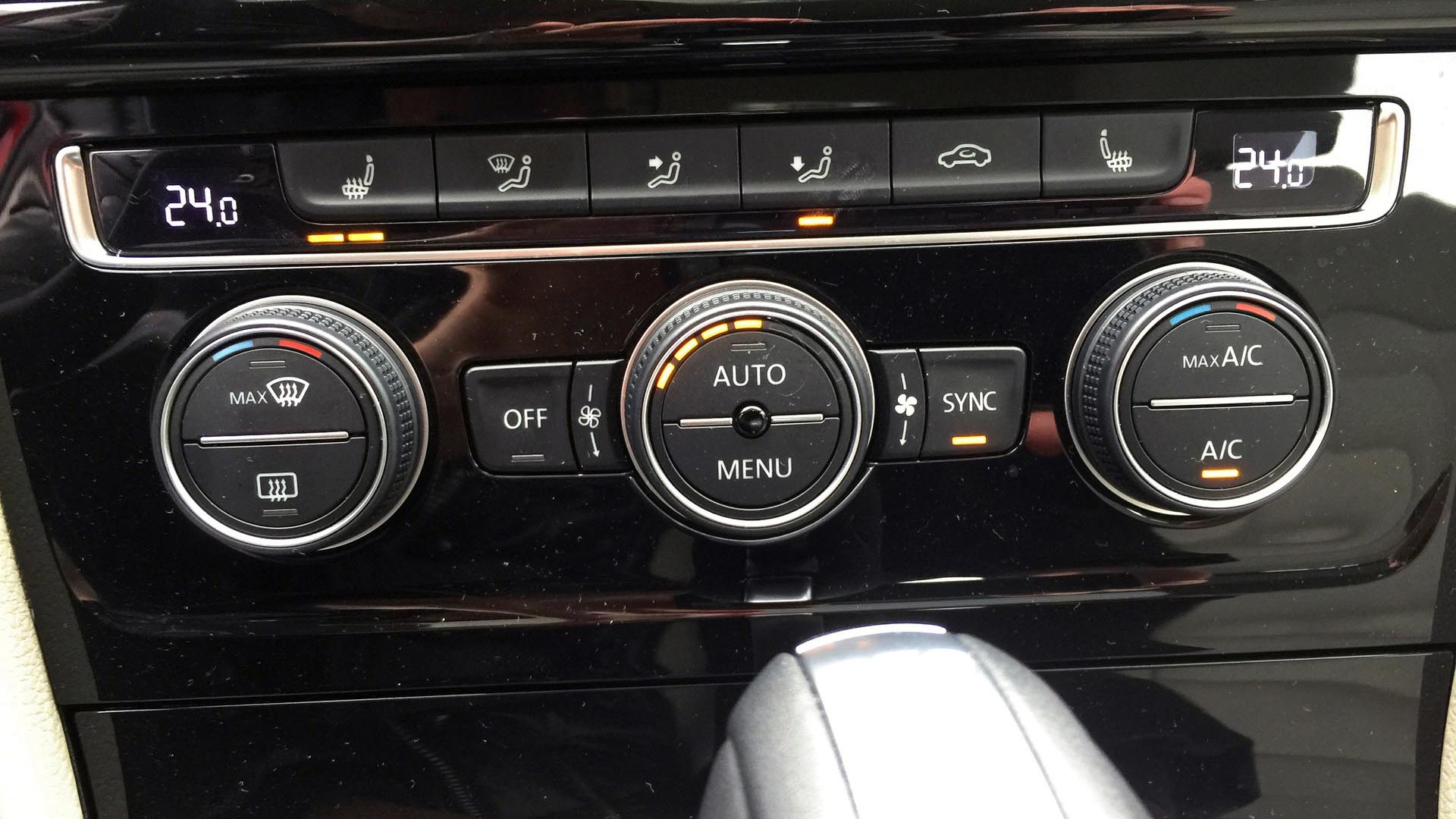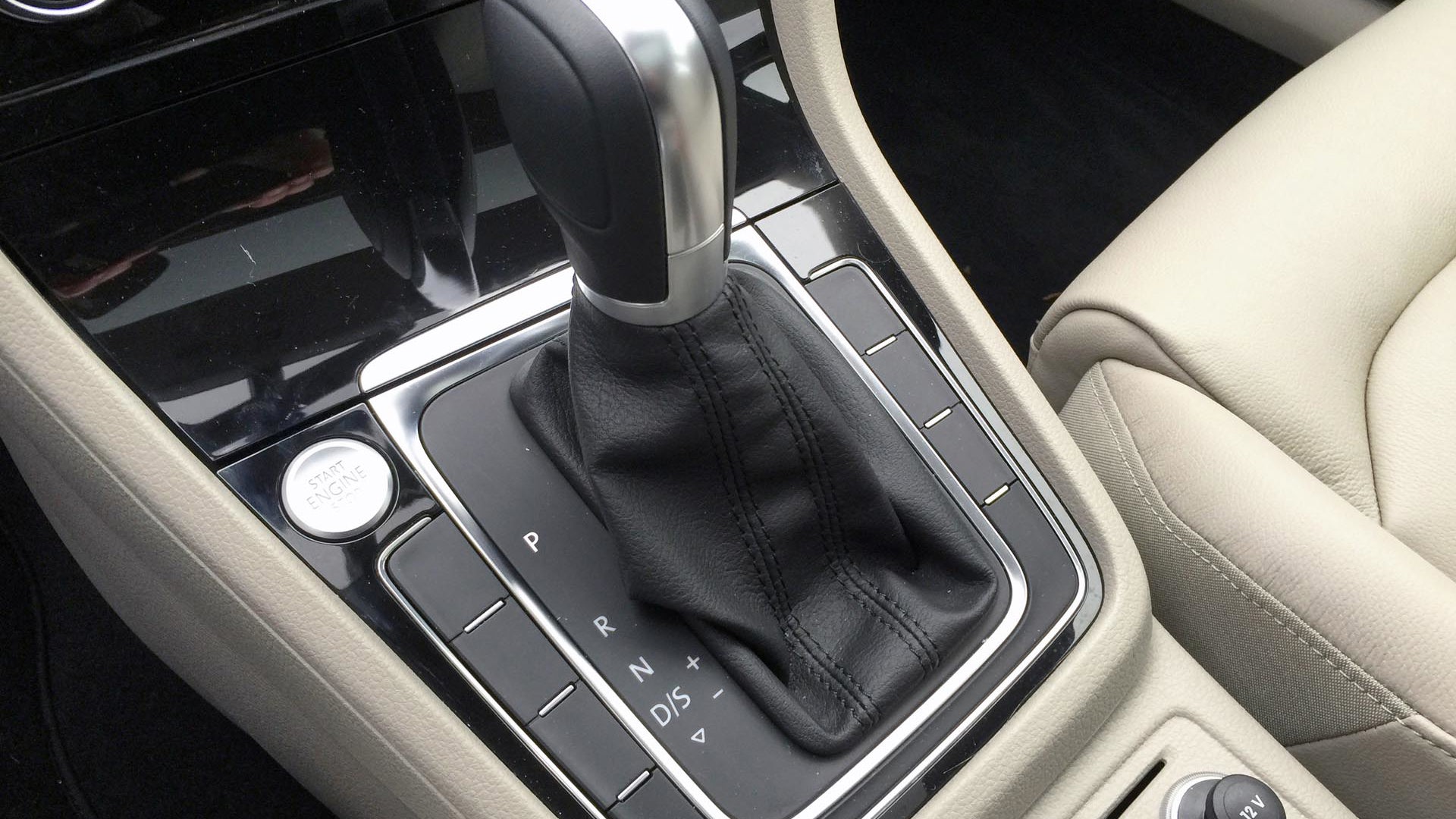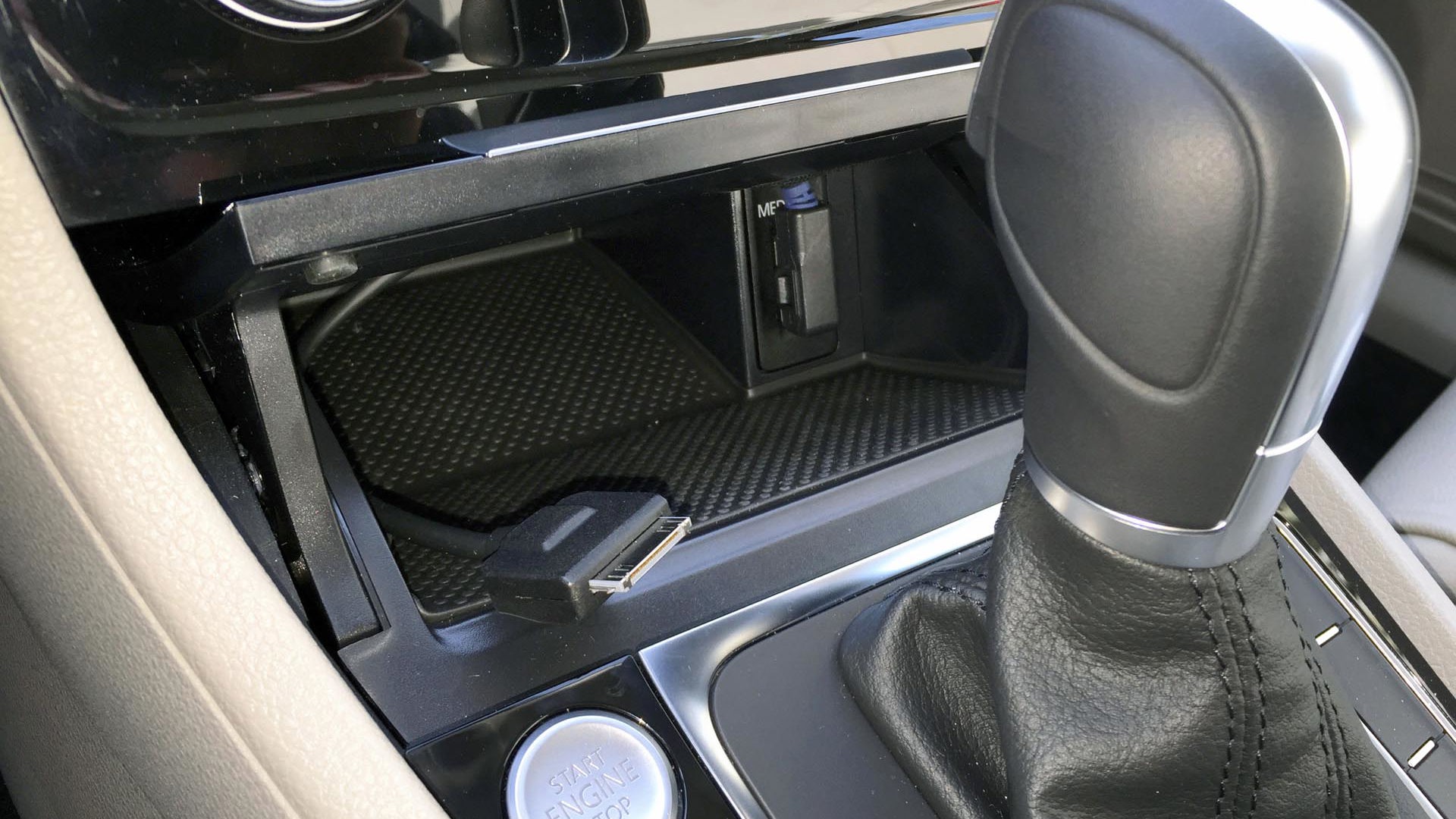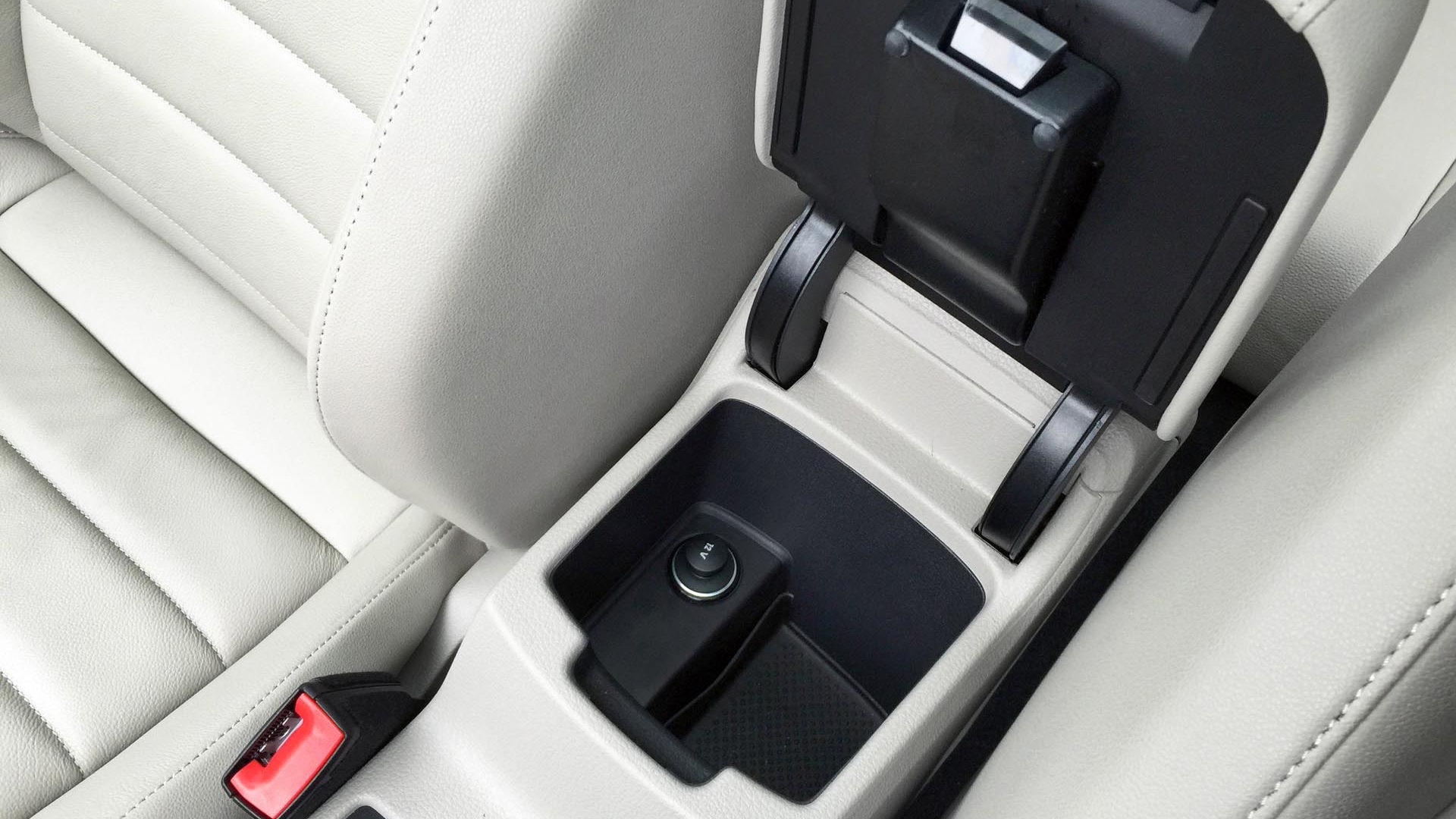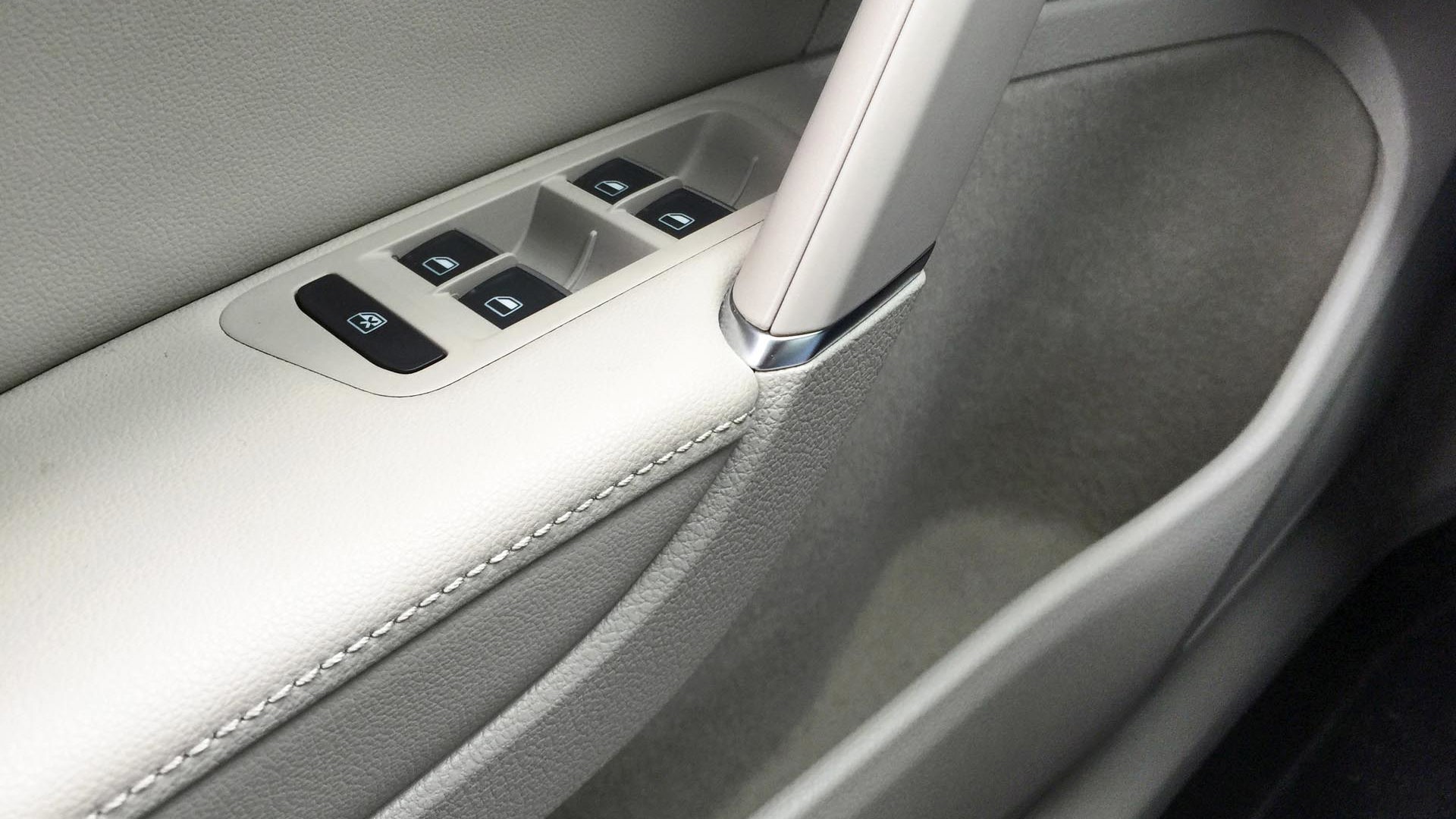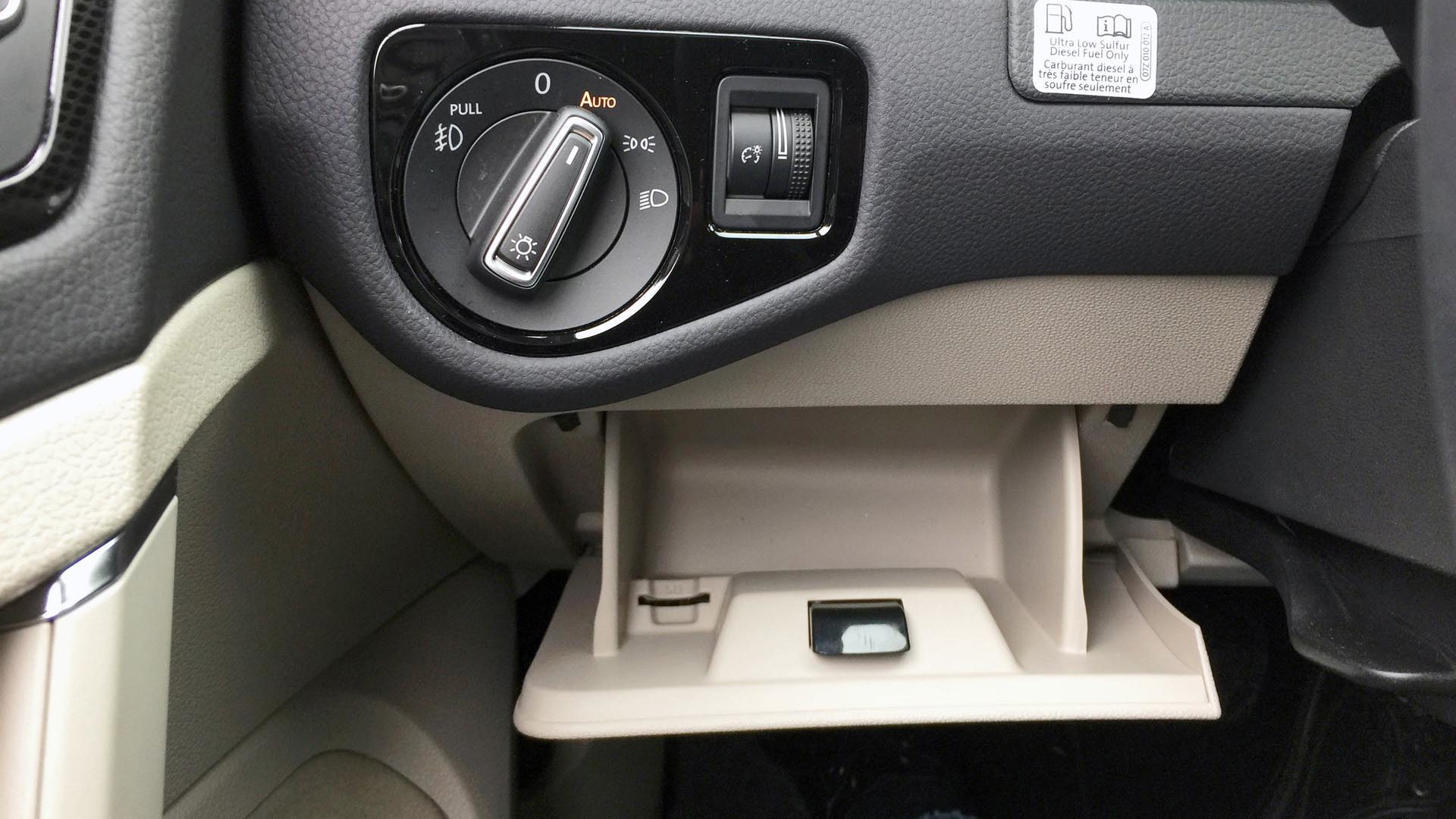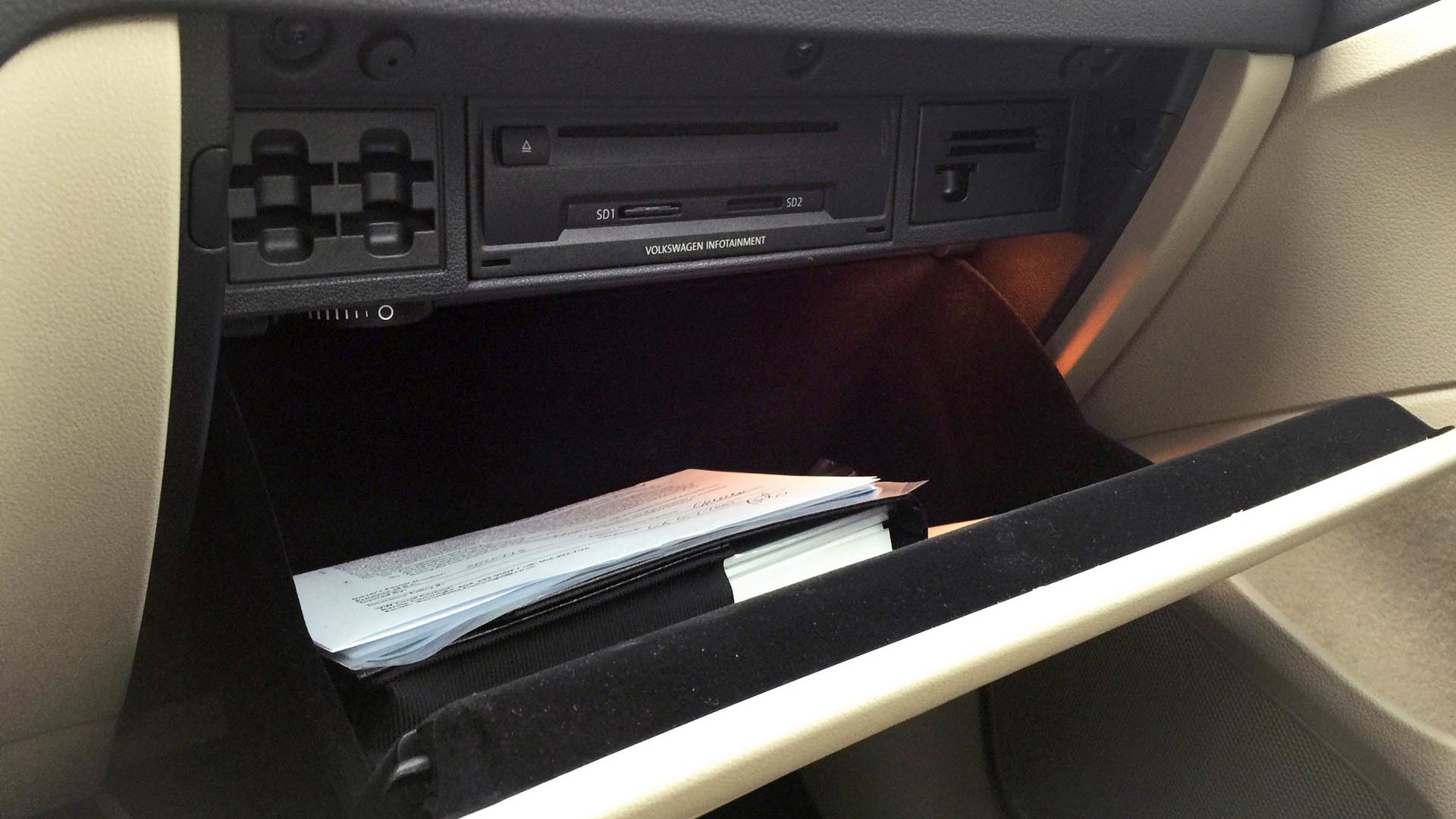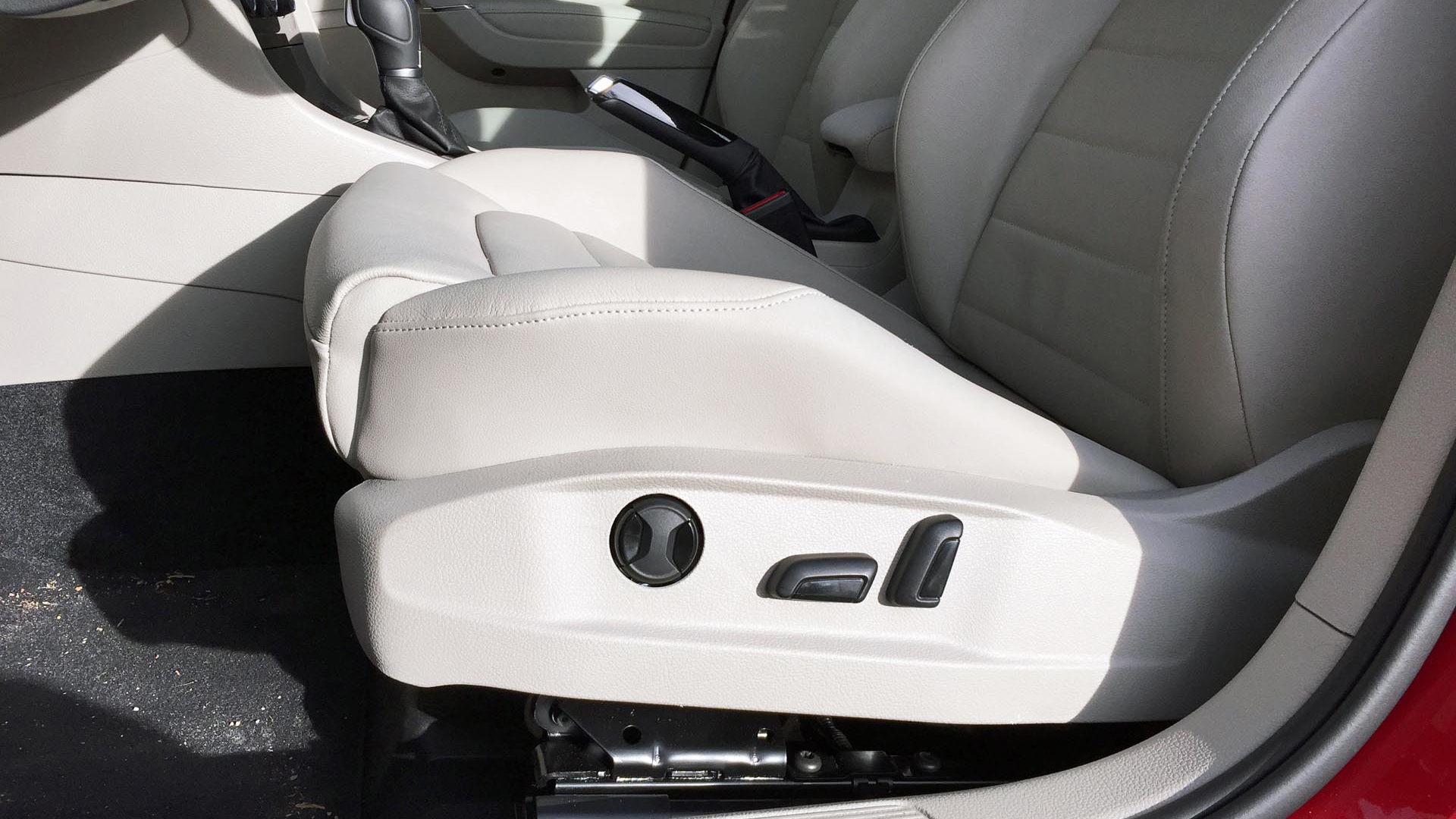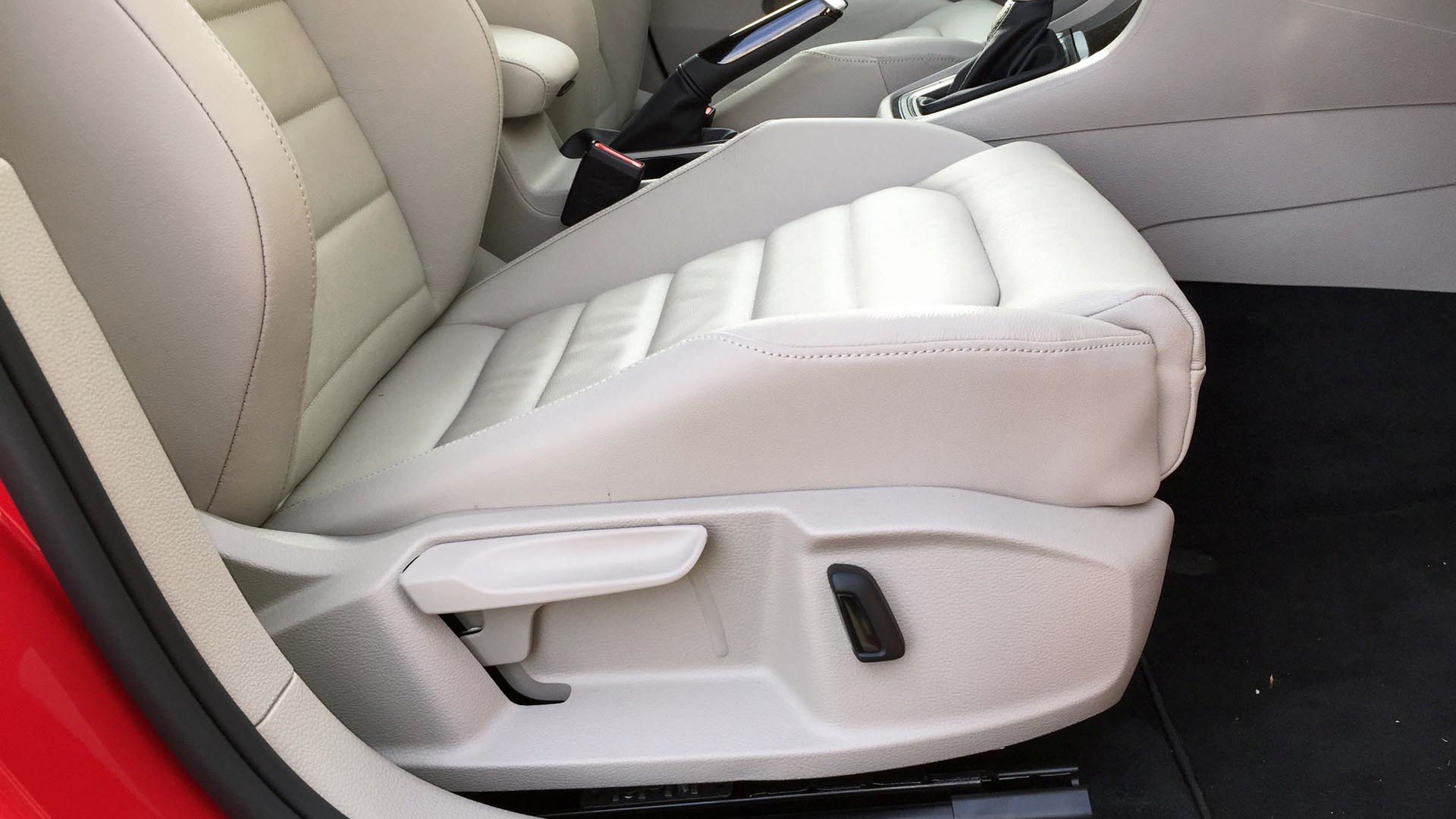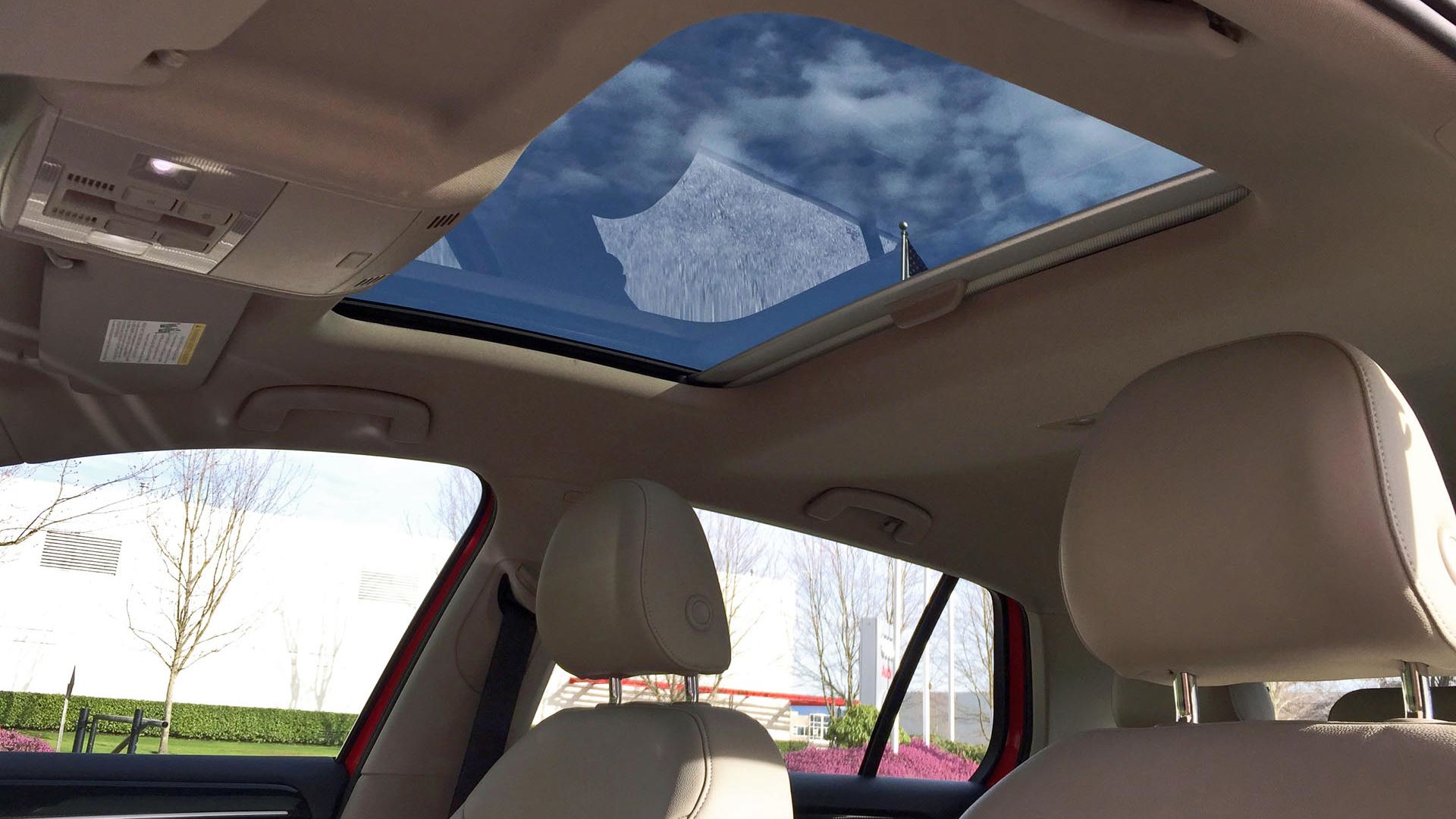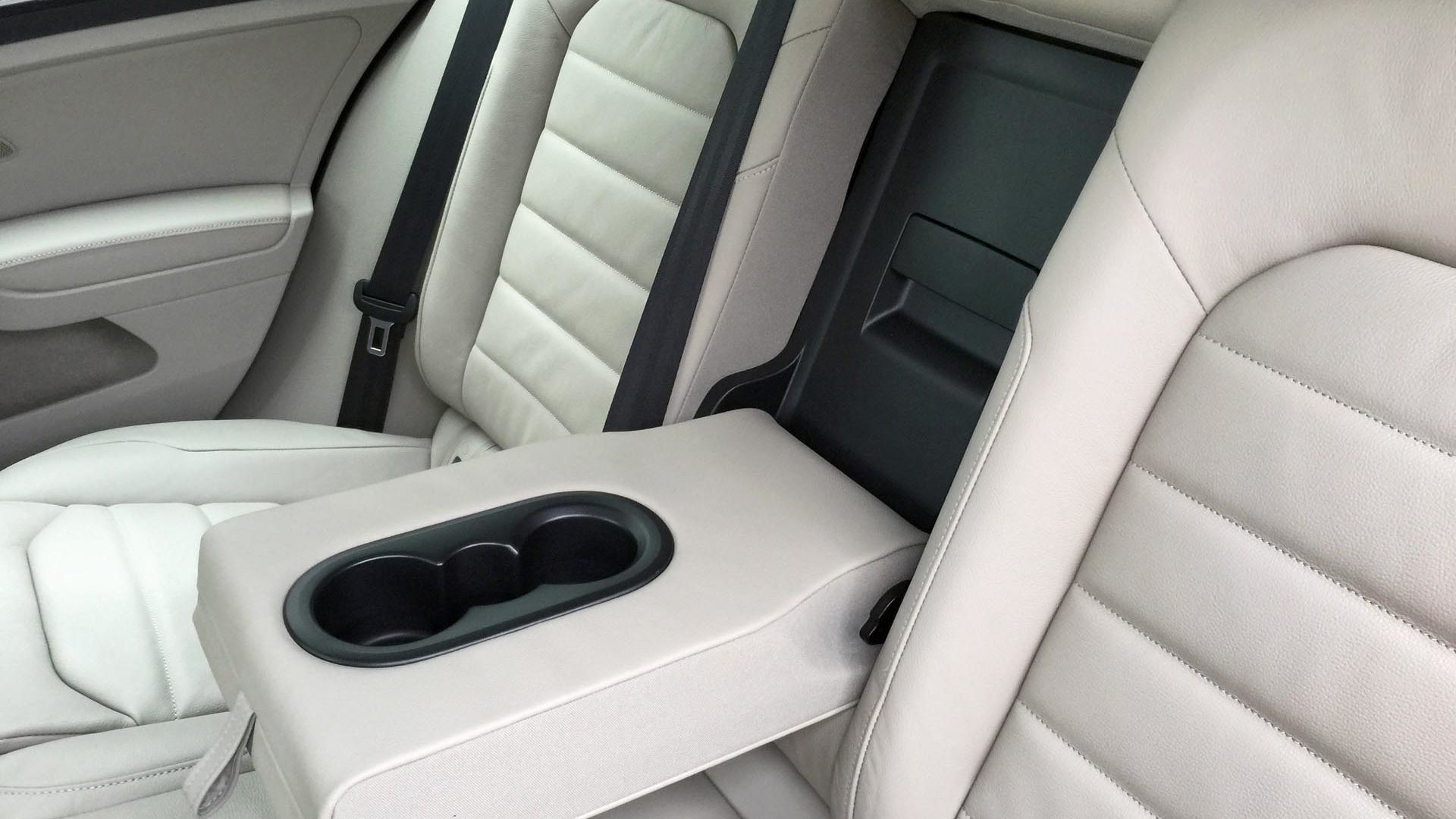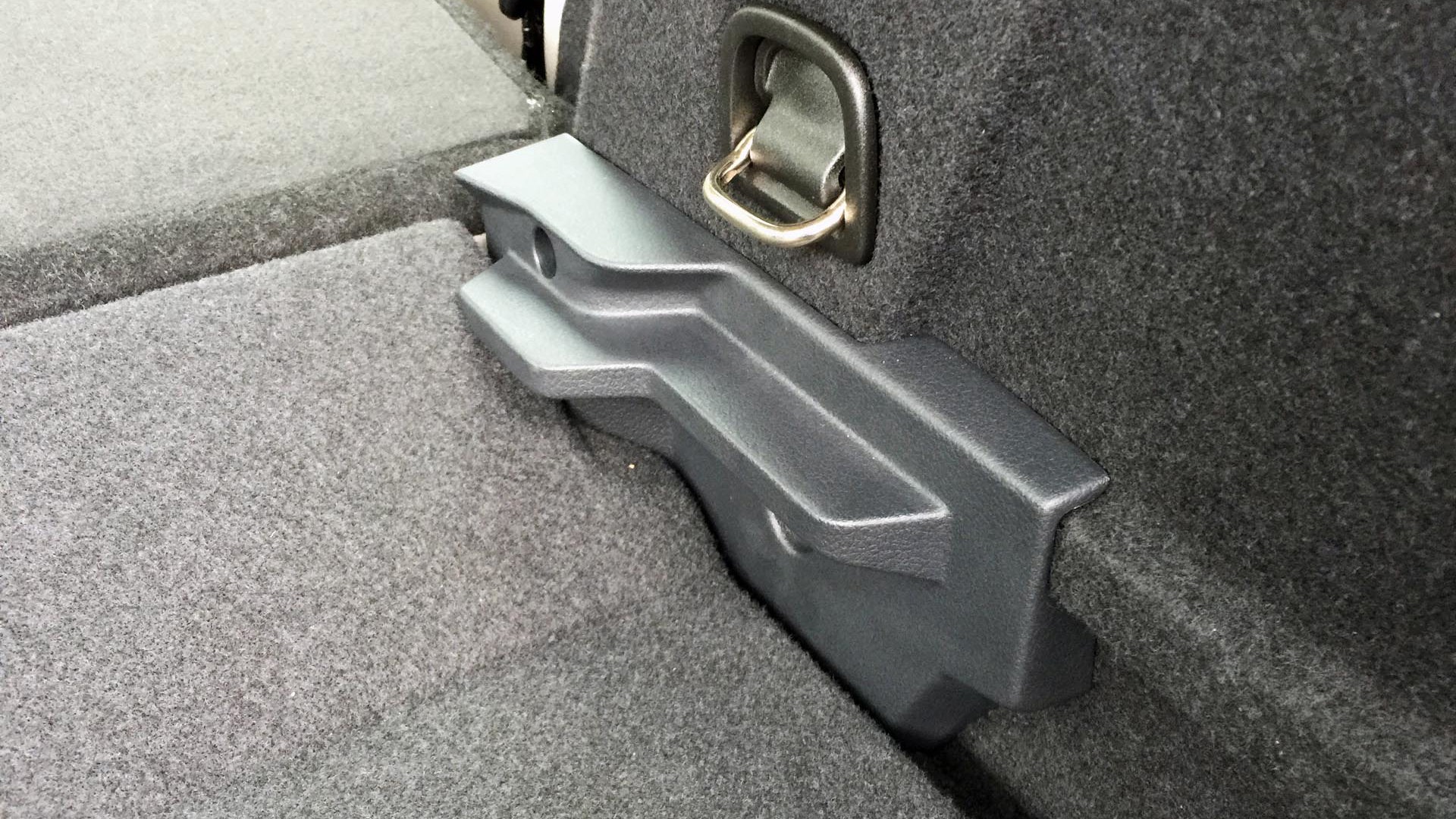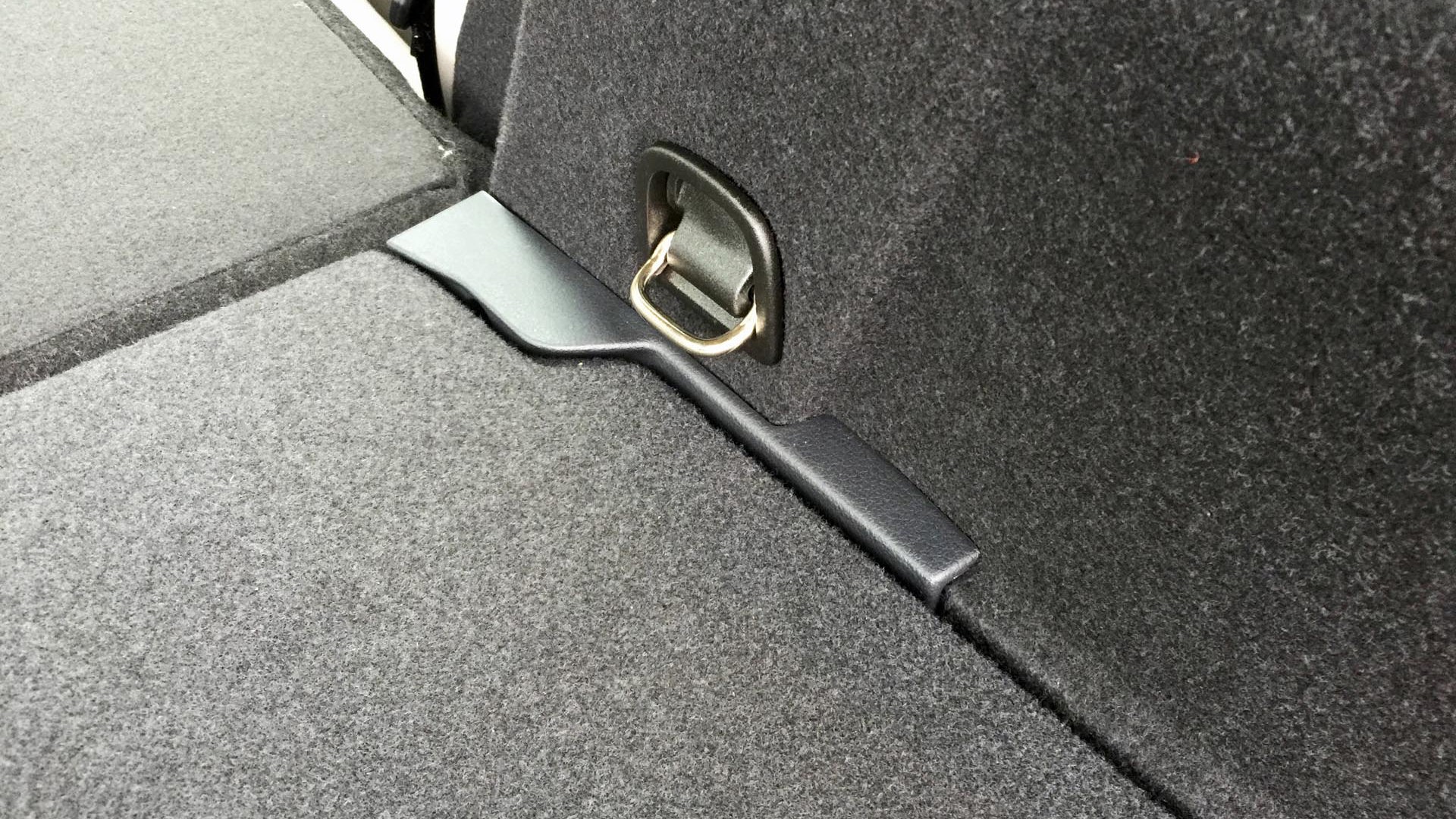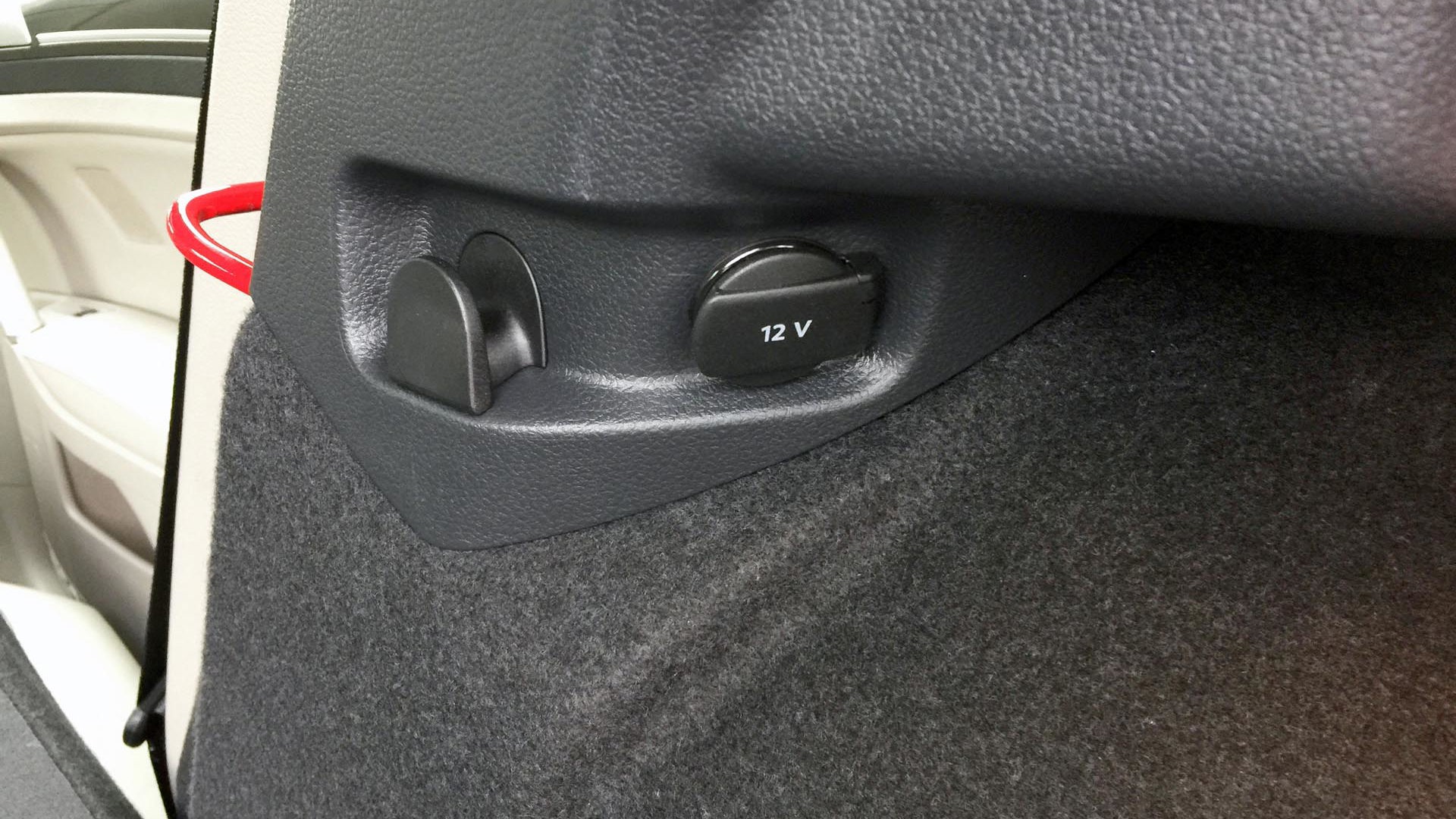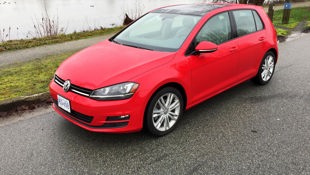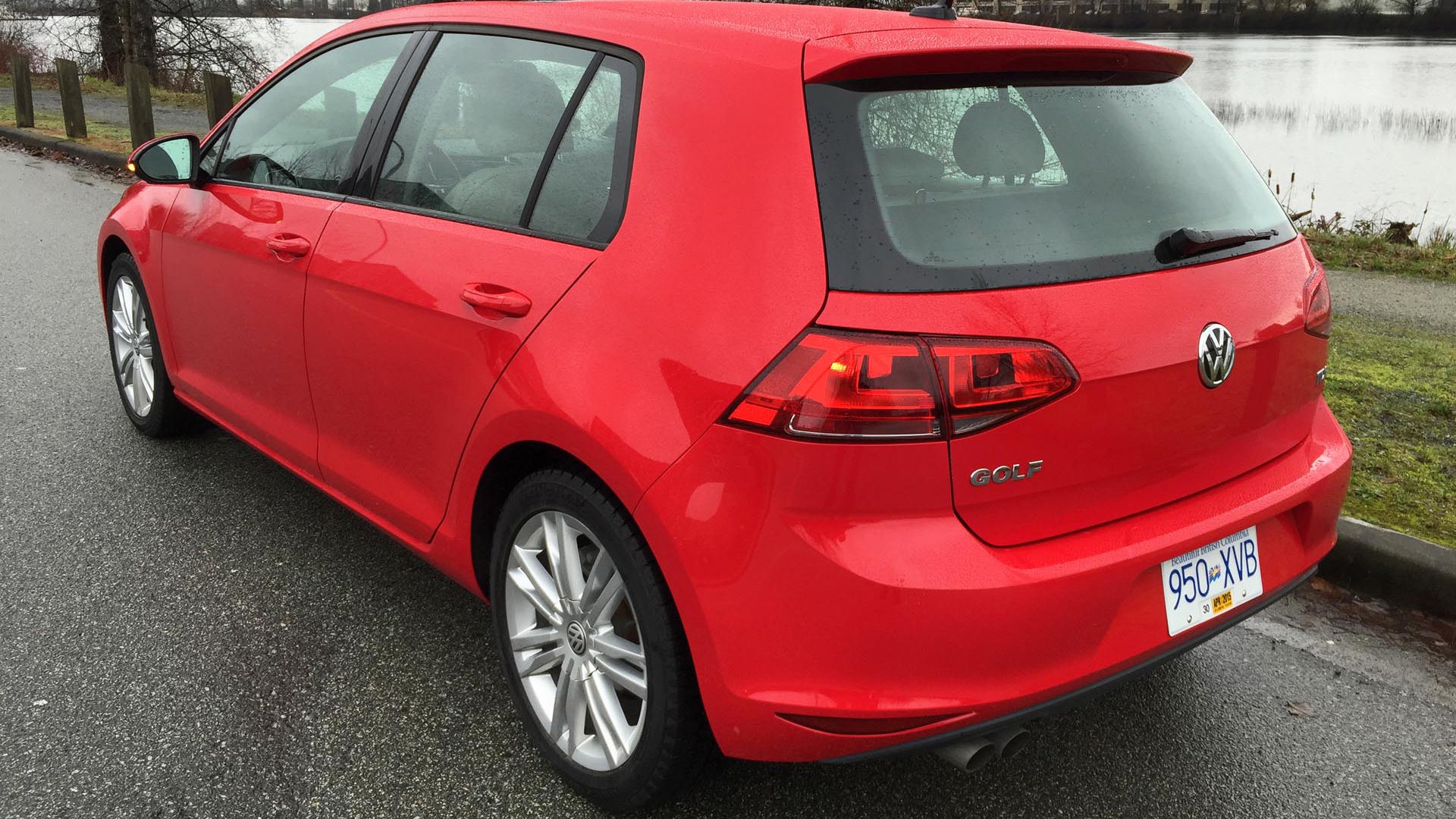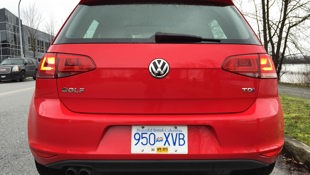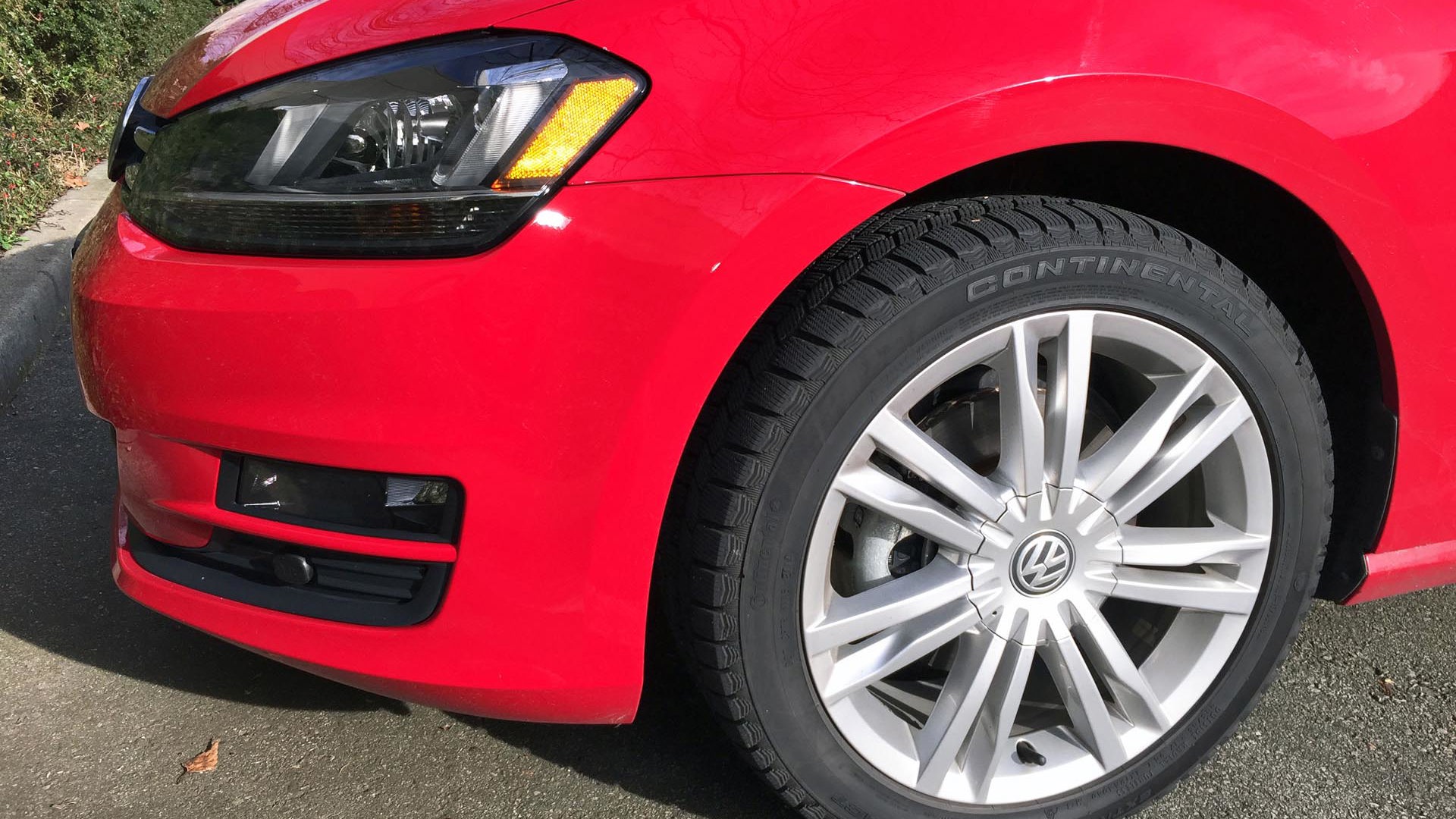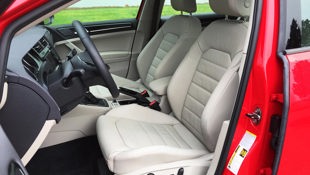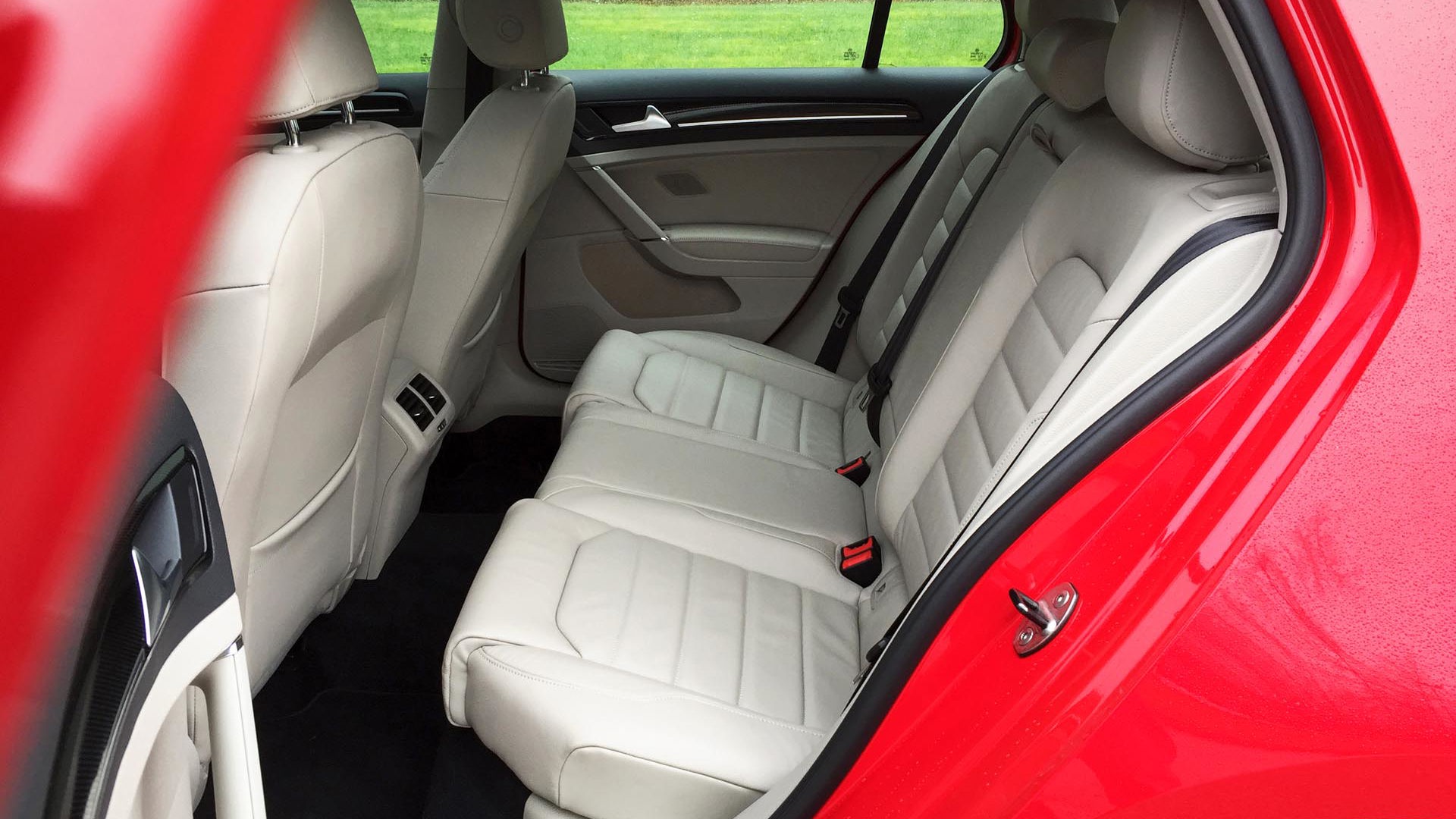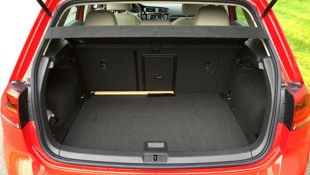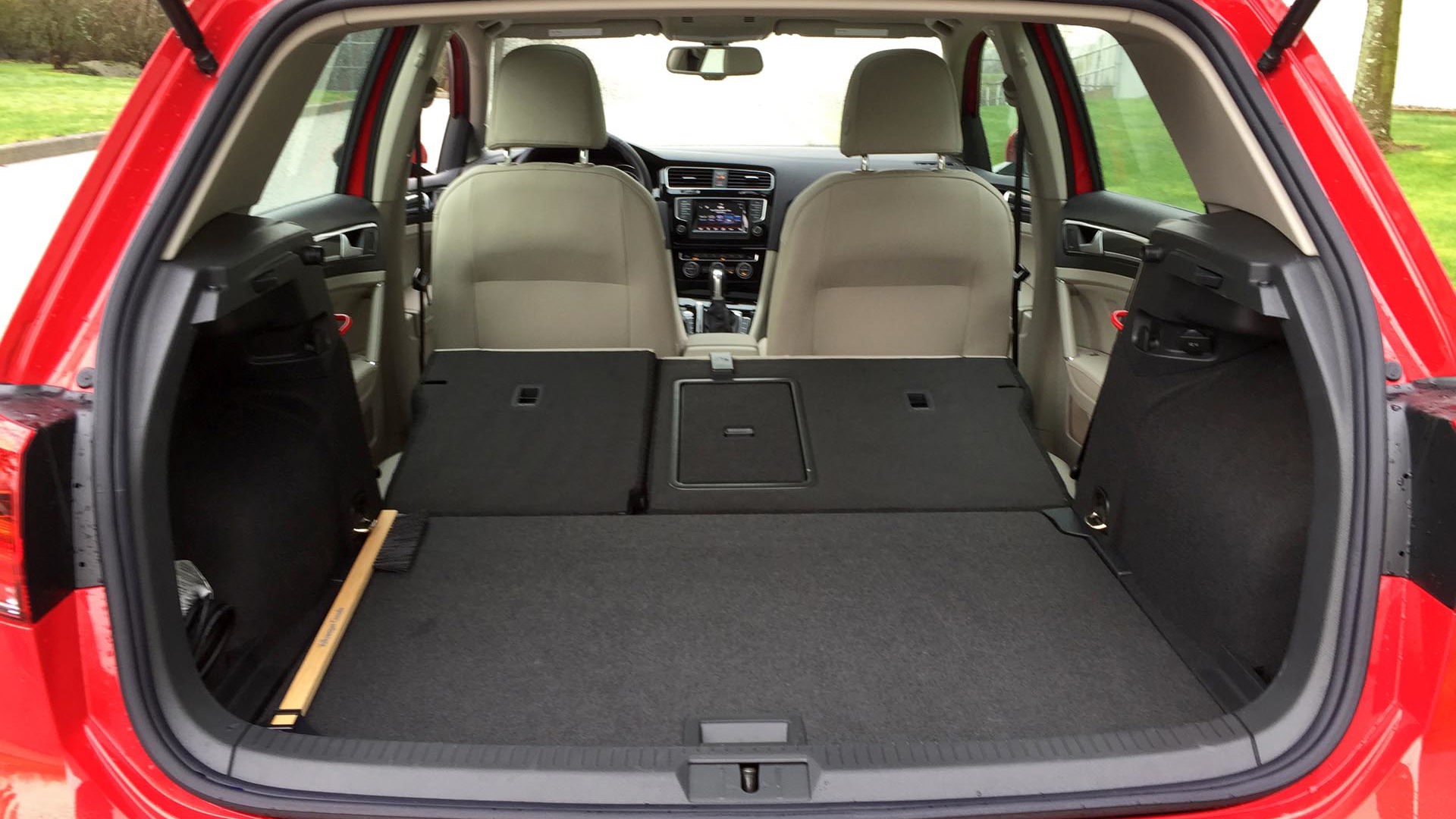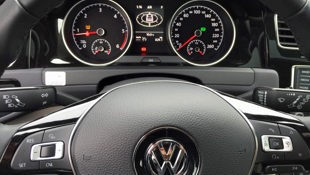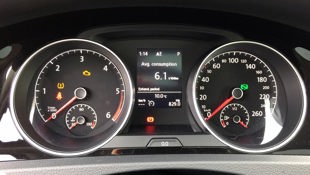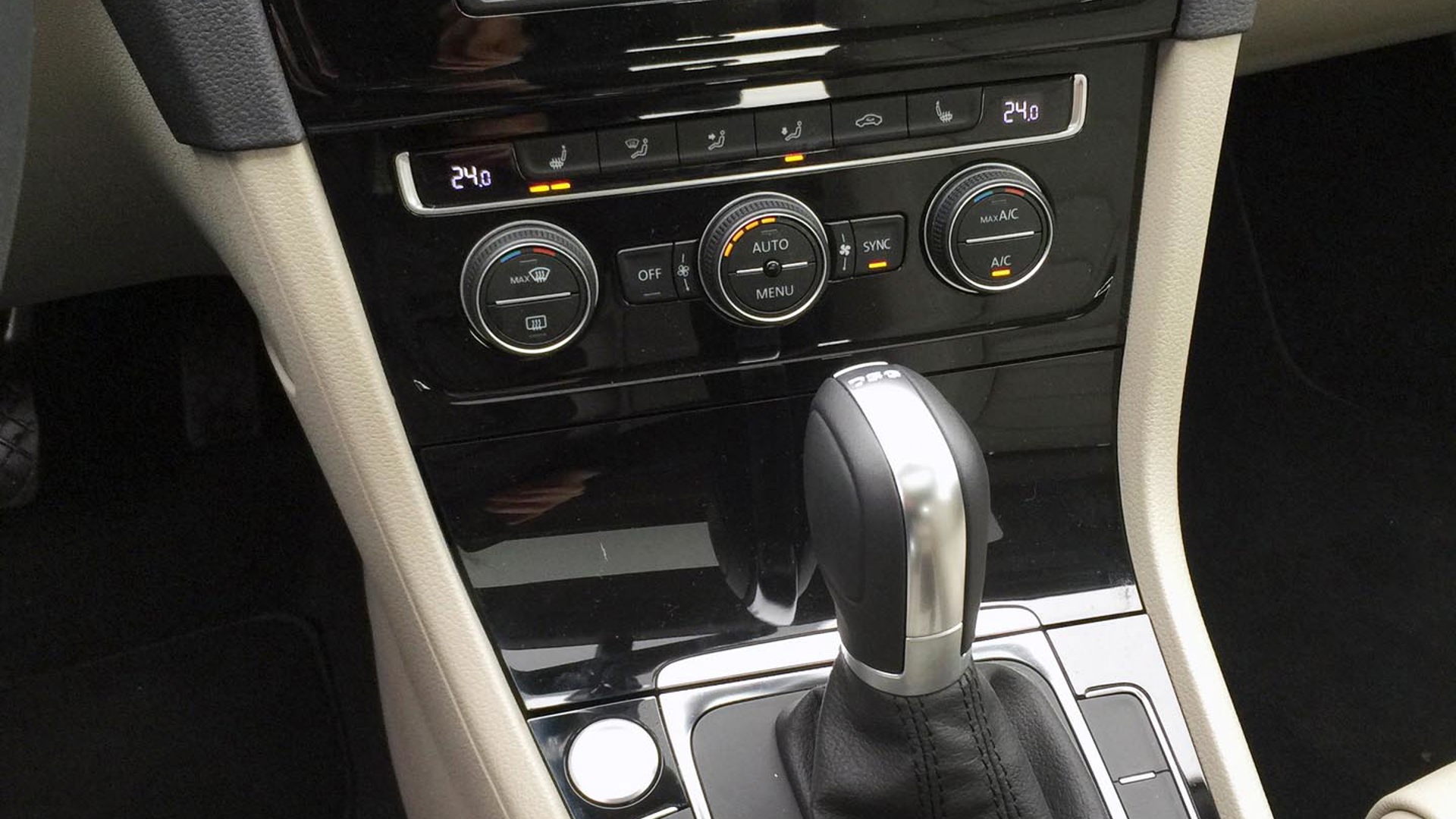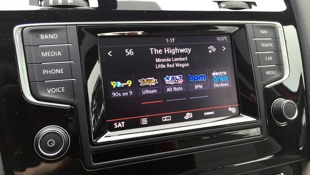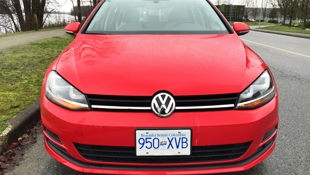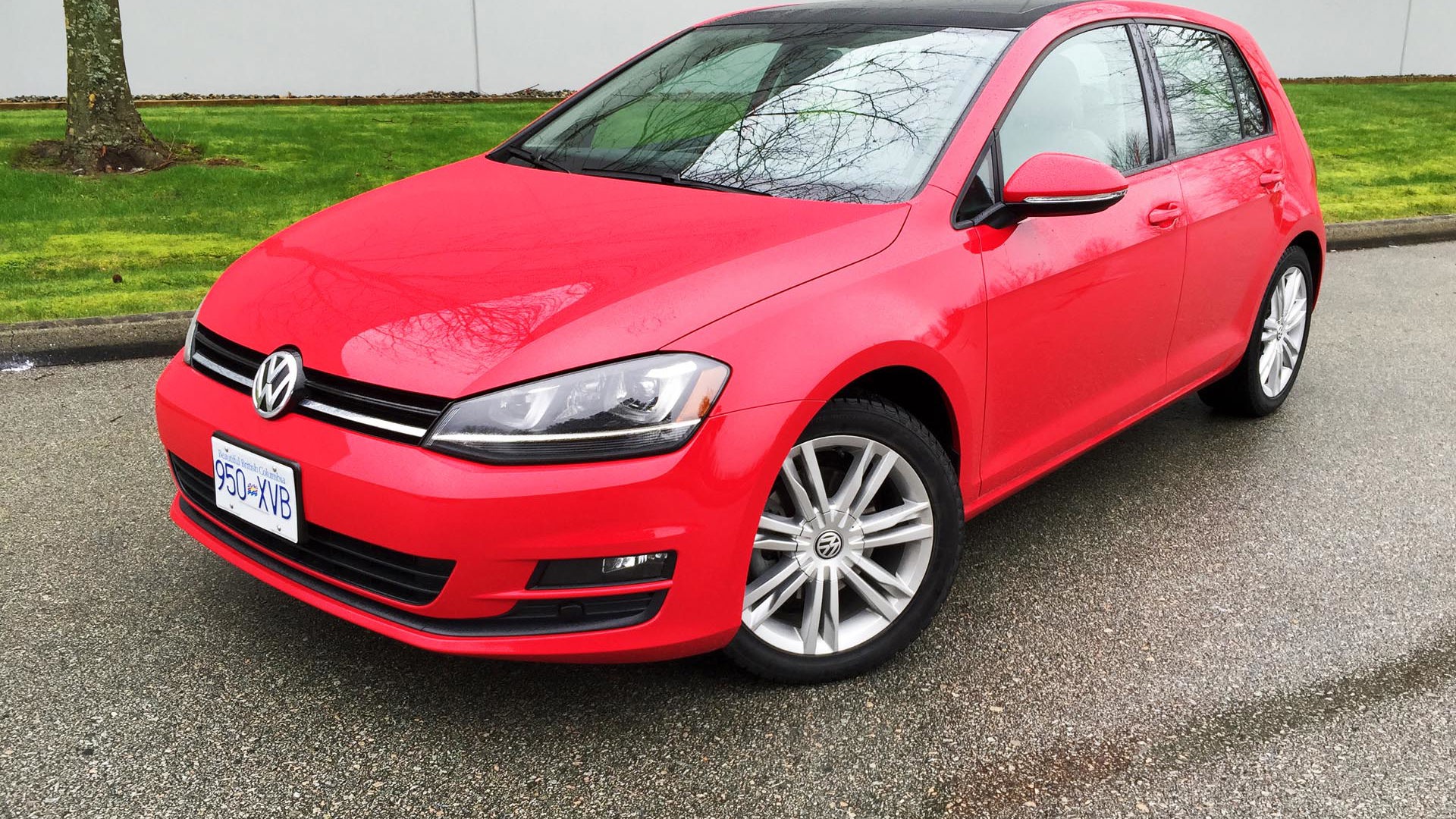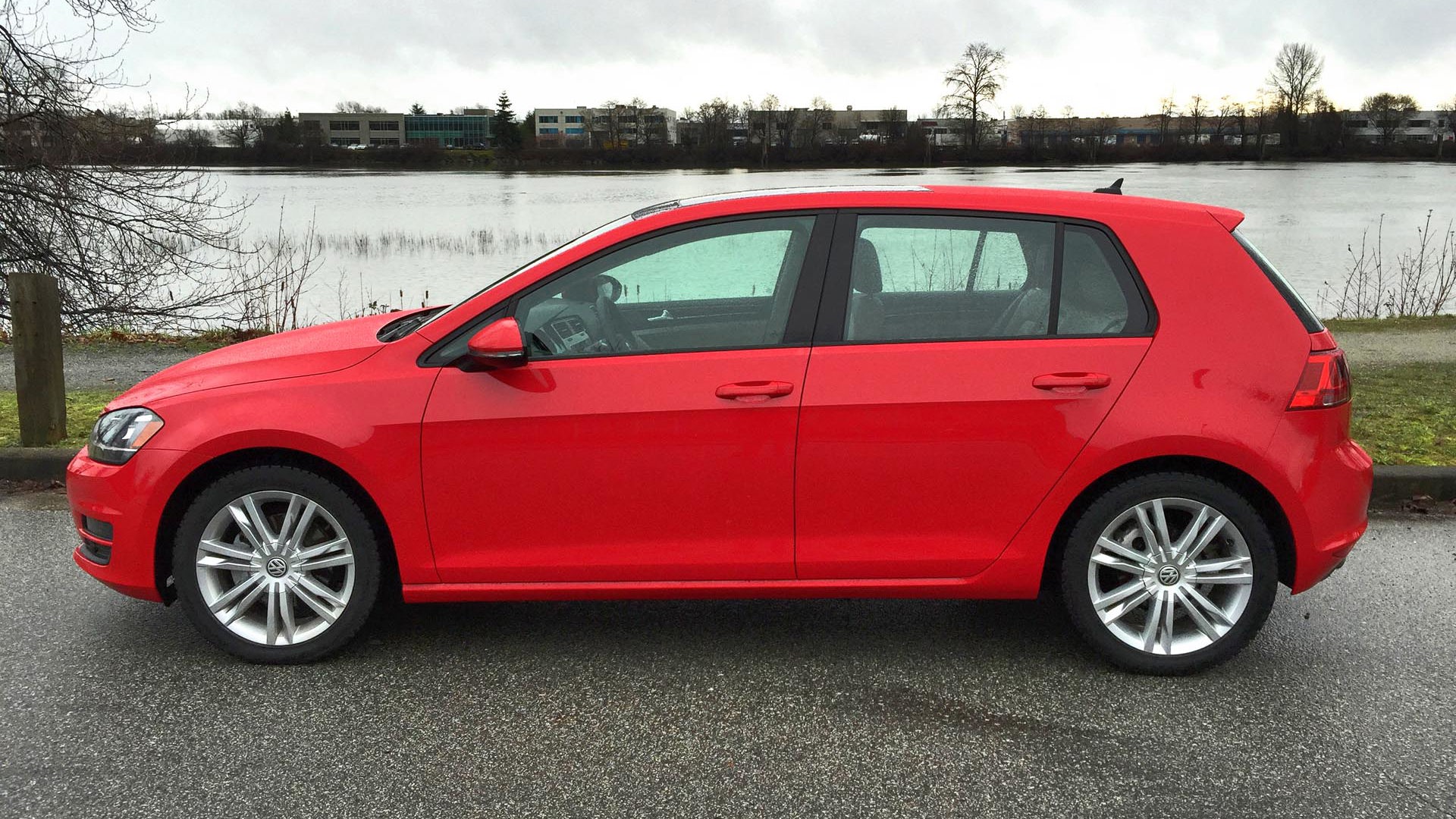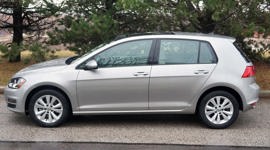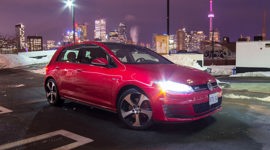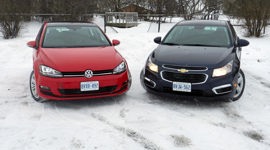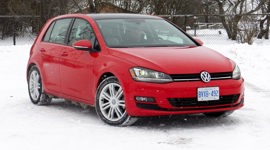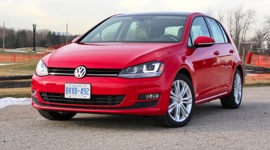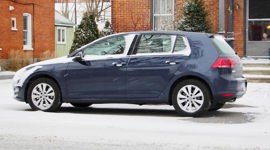 AutoTrader SCORE
AutoTrader SCORE
-
COMFORT8/10
-
PERFORMANCE8/10
-
FUEL ECONOMY10/10
-
INTERIOR10/10
-
EXTERIOR STYLING9/10
The 2015 Volkswagen Golf TDI is one of the few cars that can offer both outstanding fuel economy and great driving dynamics – unlike most hybrids. Now riding on VW’s larger Modular Transverse Matrix (MQB) platform which underpins all the latest VW and Audi small cars, the 2015 Golf TDI offers across-the-board improvements over its predecessor: more horsepower, better fuel economy, improved ride and handling, a quieter cabin, upgraded interior quality, more interior room, a bigger trunk, improved connectivity, and improved safety.
The 2015 Volkswagen Golf TDI is one of the few cars that can offer both outstanding fuel economy and great driving dynamics – unlike most hybrids.
Longer, wider and lower with a wheelbase that’s 59 mm longer than the last generation Golf hatchback, the 2015 Golf TDI has a roomier cabin with more legroom, particularly for rear passengers, and more trunk space too. Cargo volume behind the rear seats below the parcel shelf is up by almost 20 percent to 490 L. With the rear seats folded down and the parcel shelf removed, there is now 1,520 L (up from 1,299 L).
Its all-new 2.0L turbocharged direct injection four-cylinder diesel engine pumps out 150 hp from 3,500 to 4,000 rpm (up from 140 hp at 4,000 rpm) and maximum torque of 236 lb-ft from 1,750 to 3,500 rpm (from 236 lb-ft from 1,750 to 2,500 rpm). Its official NRCan fuel economy ratings of 7.7/5.2/6.2 L/100 km city/highway/combined (manual) and 7.5/5.5/6.6 (DSG automatic) are a slight improvement over the previous model’s 7.9/5.6 /6.9 (manual) and 7.9/5.7/6.9 (DSG) (adjusted for NRCan’s new 5-cycle testing methods).
With 1,721 km on the odometer of our Golf TDI tester equipped with the optional six-speed DSG, our onboard fuel economy display was showing an average 6.1 L/100 km, better than the NRCan combined rating of 6.6 L/100 km. In freeway driving, we noticed that our instant fuel economy readout was showing between 4.5 and 5.0 L/100 km, much better than the NRCan highway rating of 5.5 L/100 km. We think Golf TDI owners who do a lot of freeway driving or driving on secondary roads with few stops can probably lower their combined fuel economy by at least 1 L/100 km compared to the official rating.
Interestingly, VW chose not to include an idle-stop feature in the 2015 Golf TDI, which would have improved city fuel consumption by at least 10 percent. This feature is available in some European Golfs, but perhaps VW felt that Canadian owners wouldn’t like it, or that it would add too much to the cost.
We didn’t notice a big improvement in acceleration, but that said, the new model is still an impressive performer because of its generous torque. Though there’s a slight lag in initial throttle response (perhaps due to the DSG transmission), it’s followed by a sudden surge of power and rapid acceleration. With so much low-end torque, the Golf’s diesel engine doesn’t have to be revved very hard to accelerate up to city speeds and it powers up steep hills with little effort. Equipped with the optional six-speed Direct Shift Gearbox (DSG) most shifts occur around 2,000 rpm and the engine rarely needs to rev above 3,000 rpm to keep up with the traffic. Accelerating onto the freeway, you might see 4 or 5,000 rpm, but unlike the Golf 1.8TSI that redlines at 6,000 rpm, the Golf TDI redlines at only 5,000 rpm. Cruising on the freeway at a steady 100 km/h with the DSG in top gear, the engine revs at only 1,700 rpm.
The six-speed DSG offers quick, smooth gear changes and the bumpy downshift that I’ve previously experienced when coming to a full stop seems to have been eliminated in this year’s DSG, although Senior Editor Jonathan Yarkony experienced some jerky shifts during his winter test drive of a similar car. There is some forward creep when idling in Drive, making it necessary to keep the right foot firmly on the brake pedal while waiting for a light to change. Using the shift lever in the Tiptronic manual shift gate, the driver can take control of shift timing, and the shift times are quick, up and down; but there are no shift paddles behind the steering wheel in the Golf TDI. The DSG is a $1,400 option.
We didn’t try the standard six-speed manual transmission but it’s nice to know that you can order a manual in all three Golf TDI trim levels, Trendline, Comfortline and Highline.
The 2015 Golf TDI is certainly the quietest Golf TDI I’ve ever driven: the clatter of the diesel engine can barely be heard when cruising on the freeway and is just a distant rumble at idle with the windows rolled up. I’ve driven some gas engine cars that are noisier than this. However, I detected a couple of strange sounds in the cabin – an intermittent scratchy sound when travelling over bumpy secondary roads, and a strange popping sound coming from the centre console every 5 or 10 minutes. They were faint, but they were there.
One difference between the 2015 Golf TDI and other Golfs is its rear suspension design: other Golfs have an independent multi-link rear suspension, but the 2015 Golf TDI has a rear semi-independent torsion beam. The reason for this is that its new more powerful, lean-burning 2.0L diesel engine requires Diesel Exhaust Fluid (DEF) injected into the exhaust flow in order to meet government nitrogen oxide emissions standards. The DEF is stored in a new 15.4 L tank under the rear floor and there just isn’t enough room for the tank and the more complicated independent rear suspension.
DEF (VW calls it AdBlue) is a non-hazardous mixture of urea and de-ionized water that is odourless and colourless and has a slight smell of ammonia. When injected into the exhaust gas, it breaks down into ammonia and carbon dioxide. In the catalytic converter, the ammonia turns the NOx into harmless nitrogen and water, which are then released into the atmosphere through the exhaust pipe.
An AdBlue filler cap can be found right beside the ultra-low-sulphur diesel fuel cap (Jetta and Passat AdBlue fillers are in the trunk) and the tank needs to be refilled every 15,000 km or so, according to VW Canada. A warning light comes on in the dash when the level is getting low. Refilling AdBlue is normally done at regular oil change intervals, but owners can top it up themselves. Predictably, VW recommends using their own formula, which is sold at VW dealerships.
The rear torsion beam doesn’t seem to make a big difference in the ride and handling. In theory, independently sprung rear wheels can improve ride quality and handling stability by independently absorbing road shocks, such as potholes. But in our test drive, we found the suspension absorbed potholes well and the car felt solid and composed. With a wider track and 17-inch low-profile winter tires, our Golf TDI felt very stable with minimal body lean when cornering. Cornering prowess is enhanced by the Golf’s standard Cross Differential system (XDS) that automatically sends more torque to the outside front wheel to reduce understeer and improve grip. Our car was equipped with Continental ExtremeContact 225/45R17-inch winter tires that kept a steady grip on Vancouver’s wet roads and plowed through the occasional road flooding without hydroplaning.
With its tall roof and large windows, the Golf TDI offers the driver good outward visibility and there’s a rearview camera to help when backing into or out of a parking space, not to mention the standard rear wiper and washer. The Golf’s electro-hydraulic steering offers just the right amount of steering response for confident city and highway driving, but it lacks the immediacy of the GTI’s steering response – that’s probably a good thing for the majority of TDI buyers. Standard four-wheel disc brakes provide a firm pedal feel and short, straight stops in panic braking situations. Unique among small cars is the Golf’s Automatic Post-Collision braking system, which automatically applies the brakes after a collision to help prevent a secondary collision. Our Highline trim also had the optional Forward Collision Warning system that warns the driver of impending collisions, but it doesn’t provide automatic braking. We were surprised to see that blind spot warnings and lane change warnings are not offered on the Golf TDI.
Getting in and out of the four-door Golf TDI is easy: the doors open wide and the roof is tall. The front seats have generous thigh and torso bolsters and the seats are very comfortable. In the Highline, the driver has power height, fore-aft, recline and lumbar adjustments while the front passenger has manual height, power recline but no lumbar adjustment. In the rear seat, the two outboard passengers have plenty of headroom and knee room and lots of foot room under the front seats, but the middle seat is best left unoccupied: a rear centre floor tunnel and protruding centre console restrict passenger space. The rear centre armrest folds down to reveal two cupholders and a pass-through to the trunk.
You can’t help but be impressed by the quality of the Golf’s interior materials, and the dash layout is simple and conservative. Our Highline tester had the cream-coloured “Shetland Vienna” leather seats, black leather-wrapped flat-bottom steering wheel, soft-touch dash plastics, piano black trim on the centre dash accented by chrome trim, and aluminum door handles. Small touches emphasize attention to detail: flock-lined door pockets, spring-loaded cup grippers, large door grab handles, padded armrests, thumb grips on the steering wheel, and a coin drawer near the driver’s door. Unsurprisingly, it’s all very Audi-like.
Volkswagen’s bright, white-on-black instrumentation is attractive and easy to read at a glance and most buttons and controls are simple to operate, although the ventilation buttons in the centre console are small and hard to see.
Between the tachometer and speedometer is a bright information display that can by operated by steering wheel buttons: here you can find and choose limited functions for the audio, telephone, vehicle status, driving data and (optional) navigation system. For example, without taking your hands off the steering wheel, you can change the radio station, look up a contact in your telephone address book and dial the number, check your average fuel consumption and travel time to destination, or choose a destination for the navigation system.
In the centre of the dash, the 5.8-inch touchscreen offers more detailed menus for telephone, audio, vehicle information, traffic information and navigation functions. These can be accessed by pushing buttons or using voice commands, however voice activation only works for telephone and navigation, not for audio or climate control (except you can show a graphic of the interior ventilation choices on the screen). A feature sure to impress your friends is the activation of sub-menus simply by moving your hand towards the screen.
The premium Fender stereo in our Highline test car was good but not great, but that’s subjective: we journalists hear all sorts of expensive, high-end audio systems in different cars and we tend to be too picky. The 400-watt, eight-speaker-with-subwoofer Fender system is just fine in this price range. Apart from wireless Bluetooth audio and telephone (which are easy to set up on the centre touchscreen), the Golf TDI includes an iPod cable connector in the lower console storage bin, two SD card slots and a CD player in the glovebox, and a 12-volt power outlet under the centre sliding armrest.
Opening the Golf’s trunk is accomplished by pushing on the large VW badge in the liftgate. It lifts up easily and reveals a fully lined trunk with a floor panel that can be moved into a lower position if desired. To hide trunk valuables, there is a one-piece cargo cover that can be removed when bulky items are being transported. However, there is really nowhere to put it except on top of the luggage. I tried putting it under the variable height floor, but it doesn’t fit. Still, I love the utility and spaciousness of the Golf’s hatchback body style. With both rear seatbacks folded down, the Golf TDI can devour even big items like refrigerators, couches, bookshelves, chairs, and single mattresses. On moving day, you can move a lot of stuff yourself and save money on movers.
Good news for TDI buyers is that the 2015 Golf TDI is now available in the base Trendline trim. That means you can buy a 2015 Golf TDI for a couple of grand less than you could buy the last-generation Golf TDI, which was only offered in the mid-level Comfortline and Highline trims. It also means you can have cloth seats instead of leatherette or leather (which not everybody likes). 2015 Golf TDI Trendline models start at $23,095, Comfortline models start at $25,395 ($30 less than in 2013) and Highline trims start at $30,995 ($1,600 more than the 2013 TDI Highline).
2015 VW Golf TDI Trendline models ($23,095) come with a standard six-speed manual transmission or optional six-speed Direct Shift Gearbox (DSG) ($24,495) and include 15-inch tires with “Lyon” alloy wheels, front fog lights, block heater, cloth seats in Black or Shetland colours, air conditioning, 5.8-inch touchscreen with CD player and eight speakers, Bluetooth audio with voice activation, iPod connectivity with HDMI port, trip computer, Sirius/XM satellite radio (3 months free), height adjustable driver and front passenger seats with lumbar support, heated front seats, and variable height trunk floor. Cruise control is optional, though. It’s part of a package that includes cruise and leather-wrapped multi-function steering wheel ($400).
Mid-level Comfortline models ($25,395) add bigger 16-inch “Toronto” alloy wheels, cornering lights, leatherette seats, leather-wrapped multi-function steering wheel, shift knob and handbrake lever, cruise control, and rearview camera. An optional Multimedia Package ($2,195) adds bi-xenon headlights that swivel when turning, LED daytime running lights, satellite navigation system, and a Fender premium audio system with eight speakers and a subwoofer. An optional Convenience Package ($1,695) adds dual-zone automatic climate control, automatic headlights, automatic high beam dipping, panorama power sunroof, rain-sensing wipers, and auto-dimming rearview mirror.
Top Highline trims ($30,995) add 17-inch all-season tires with “Geneva” alloy wheels, a stiffer sport suspension, leather seats, nicely bolstered front sport seats and power driver’s seat, keyless locking/unlocking, pushbutton ignition, dual-zone automatic climate control, panorama power sunroof, automatic headlights, automatic dipping high beams, rain-sensing wipers, and chrome matte interior trim. Optional in the Highline is a Multimedia Package ($2,195) that includes new Forward Collision Warning system, 400-watt Fender premium audio system with 8 speakers and a subwoofer, satellite navigation, bi-xenon headlights that swivel, and LED daytime running lights.
While the previous generation Golf was assembled in Wolfsburg/Zwickau, Germany, the 2015 VW Golf is now assembled in Puebla, Mexico.
| Warranty: 4 years/80,000 km; 5 years/100,000 km powertrain; 12 years/unlimited distance corrosion perforation; 4 years/80,000 km 24-hour roadside assistance Competitors: |
| Model Tested | 2015 Volkswagen Golf TDI Highline |
|---|---|
| Base Price | $30,995 |
| A/C Tax | $100 |
| Destination Fee | 1,395 |
| Price as Tested | $36,085 |
|
Optional Equipment
Pricing:
Base price (Trendline): $23,095
Base price (Comfortline): $25,395
$3,595 (6-speed DSG transmission $1,400; Multimedia Package: Forward Collision Warning, Bi-xenon headlights that swivel, LED daytime running lights, Fender audio system with 8 speakers and subwoofer, Navigation system, 5.8-inch touch-screen with proximity sensor $2,195)
|
|
